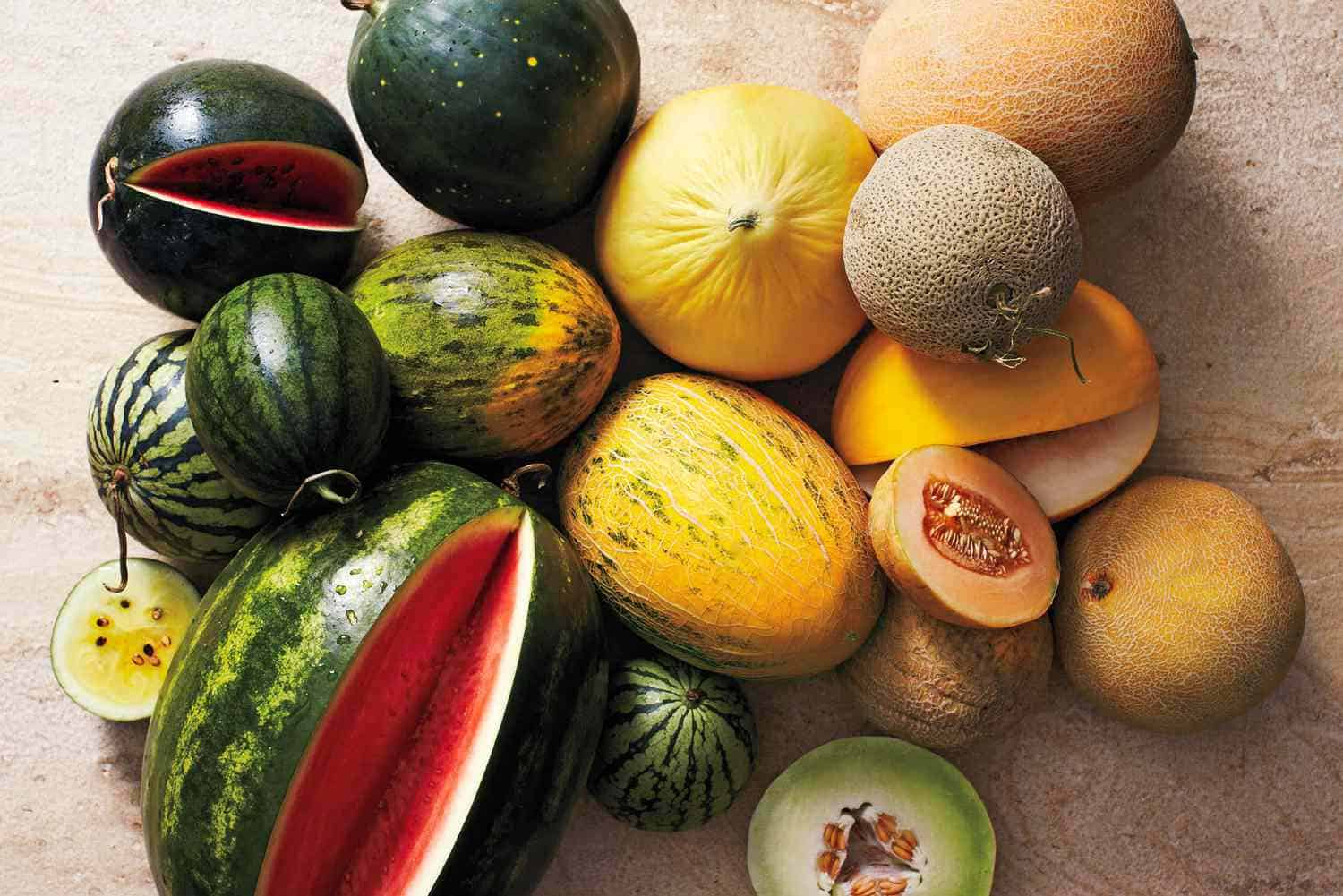Picture this: You’re wandering through a bustling farmers market on a sweltering July morning, and there it is—a vendor’s table practically groaning under the weight of the most gorgeous melons you’ve ever seen.
Some are familiar friends like watermelon and cantaloupe, but others are complete mysteries with names like “Moon and Stars,” “Snow Leopard,” and “Piel de Sapo” (which, believe it or not, means “toad skin” in Spanish).
If you’re anything like most people, you probably stick to the same three melons: watermelon for backyard barbecues, cantaloupe for fruit salad, and maybe honeydew if you’re feeling adventurous. But here’s the thing—you’re missing out on a whole universe of incredible flavors, textures, and culinary experiences.
By the end of this guide, you’ll have the confidence to explore dozens of melon varieties, know exactly how to pick the perfect fruit every time, and discover new favorites that will revolutionize your summer eating.
Whether you’re a curious food lover or someone who thought they “didn’t like melons,” prepare to have your mind changed.
What Actually Makes a Melon a Melon?
Before we dive into the delicious varieties, let’s clear up some confusion. Melons belong to the gourd family (Cucurbitaceae), making them botanical cousins to cucumbers, squash, and pumpkins. They’re technically a type of berry called a “pepo,” but you don’t need to remember that for your next trivia night.
Here’s what’s really important: all melons love warm, sunny growing conditions and typically have high water content, often between 85-95%, with seeds in a central cavity and varying degrees of sweetness.
They’ve been cultivated for over 4,000 years, originating primarily in Africa and Asia before spreading worldwide through trade and exploration.
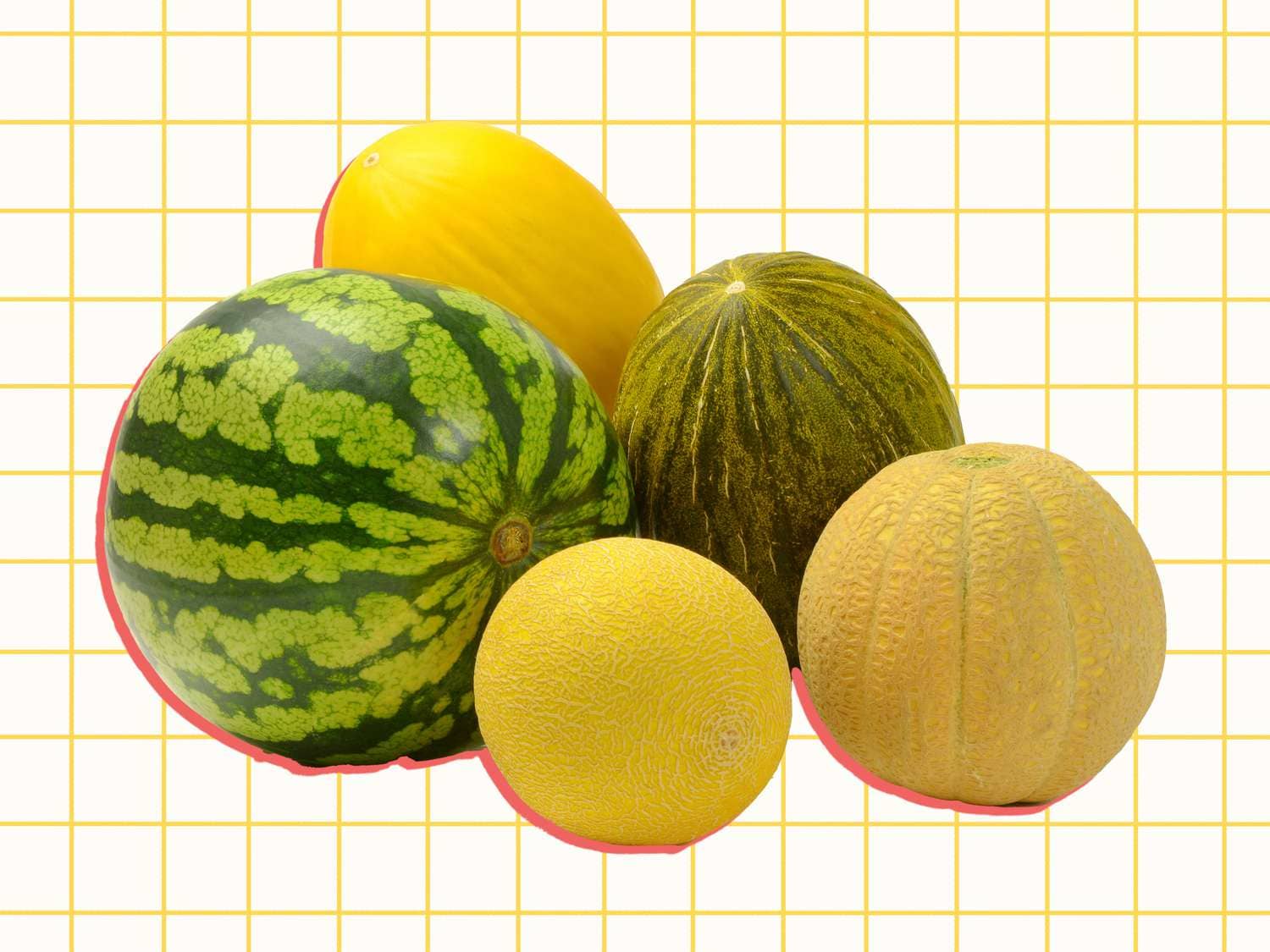
The key to understanding melons lies in recognizing that they fall into two main families.
1. Watermelons (Citrullus lanatus) are in their own category and include all watermelon varieties—from tiny “icebox” types to massive picnic watermelons, from classic red-fleshed to surprising yellow varieties. They have seeds scattered throughout the flesh, even in “seedless” varieties which contain small, soft white seeds.
2. Muskmelons (Cucumis melo) form the diverse second family, including cantaloupe, honeydew, and dozens of other varieties. They typically have seeds concentrated in a central cavity and come in an amazing array of skin textures, flesh colors, and flavor profiles.
What Americans call “cantaloupe” is technically a type of muskmelon—true cantaloupes, common in Europe, have rough, warty skin rather than the familiar netted texture.
The Essential Foundation: Three Melons You Must Master
Understanding these three varieties gives you the foundation for appreciating all other melons. Each represents a different flavor profile and selection technique that applies to entire melon categories.
Watermelon: The Hydration Champion
With 92% water content, watermelon is essentially nature’s sports drink wrapped in a protective green rind. The classic varieties feature that iconic dark green skin with lighter stripes and bright red flesh, but yellow-fleshed varieties offer a sweeter, more honey-like experience that’s worth seeking out.
The secret to selecting perfect watermelon lies in understanding what happens as it ripens on the vine. Look for a creamy yellow “field spot” where it rested on the ground—this should never be white or pale green, which indicates premature harvesting.

A ripe watermelon feels surprisingly heavy for its size and produces a deep, hollow thump when you knock on it with your knuckles, not a dull thud.
👉 Here’s How to Grow Watermelons: A Step-by-Step Guide for Sweet, Juicy Harvests
Cantaloupe: The Aromatic Showstopper
Cantaloupe earns its place as America’s favorite melon through that distinctive netted rind and vibrant orange flesh that practically glows with beta-carotene. When perfectly ripe, it releases an intoxicating fragrance at the stem end—that musky, floral aroma signals peak flavor development.
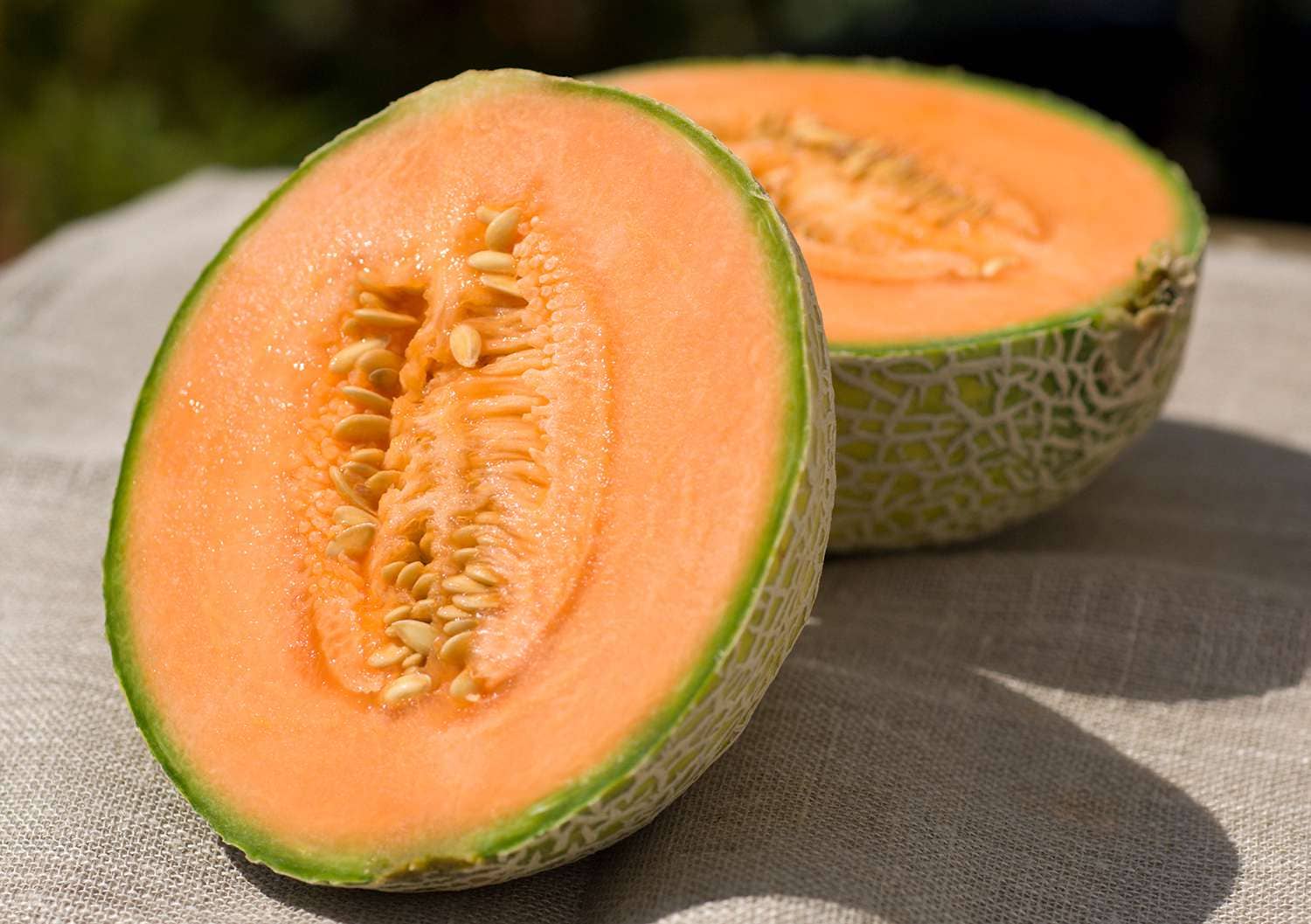
The transformation from good to exceptional cantaloupe happens in the final days on the vine, when the netting becomes prominent and the skin underneath shifts from green to golden or beige.
A ripe cantaloupe will “slip” easily from the vine during harvest, leaving a smooth, slightly indented stem end. This “full slip” stage represents the perfect balance between sweetness and shelf life.
Honeydew: The Underestimated Sweetness King
Often overshadowed by flashier melons, honeydew deserves serious recognition. Its pale green flesh can actually achieve the highest sugar levels of common melons—up to 15% when perfectly ripe—yet it maintains a clean, refreshing quality that never feels cloying.
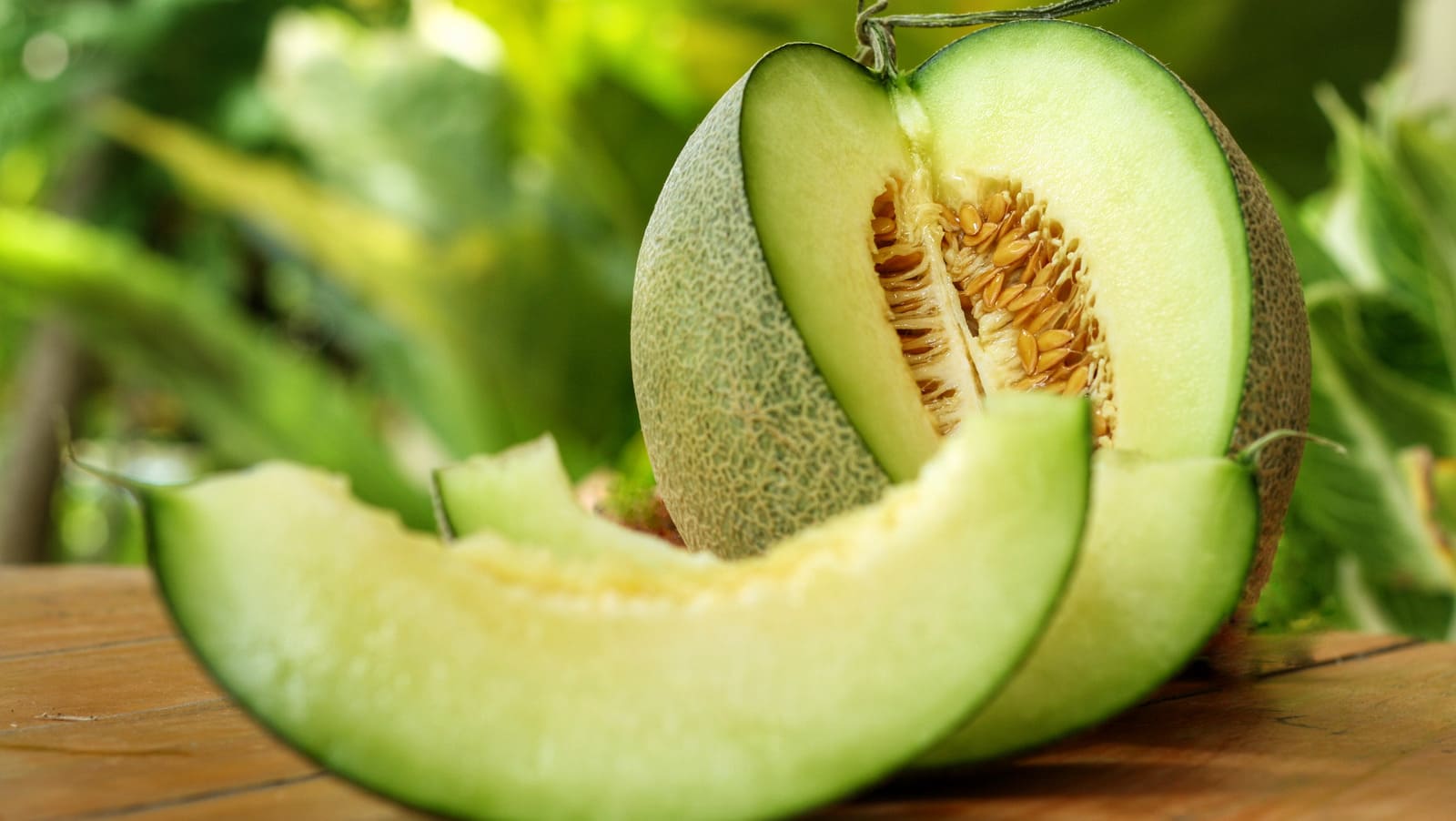
Unlike cantaloupe, honeydew doesn’t broadcast its readiness with strong aromas. Instead, focus on the transformation of its smooth, creamy exterior from pale green to yellowish-cream, with a slightly waxy feel that yields to gentle pressure at the blossom end. This subtle shift indicates the complex sugars have fully developed.
👉 Discover 35+ Apple Varieties With Selection Tips & Their Perfect Uses
Exploring the Spectacular: Melons That Will Transform Your Palate
Once you’ve mastered the fundamentals, these varieties showcase the incredible diversity possible within the melon family. Each offers unique characteristics that demonstrate why serious food lovers seek out specialty varieties.
Galia: The Israeli Innovation
This brilliant hybrid combines cantaloupe’s aromatic intensity with honeydew’s refined sweetness. Created in Israel in the 1970s, Galia melons feature cantaloupe’s familiar netted exterior but reveal pale green flesh with complex tropical notes—hints of banana, pear, and honey that create an almost wine-like flavor profile.
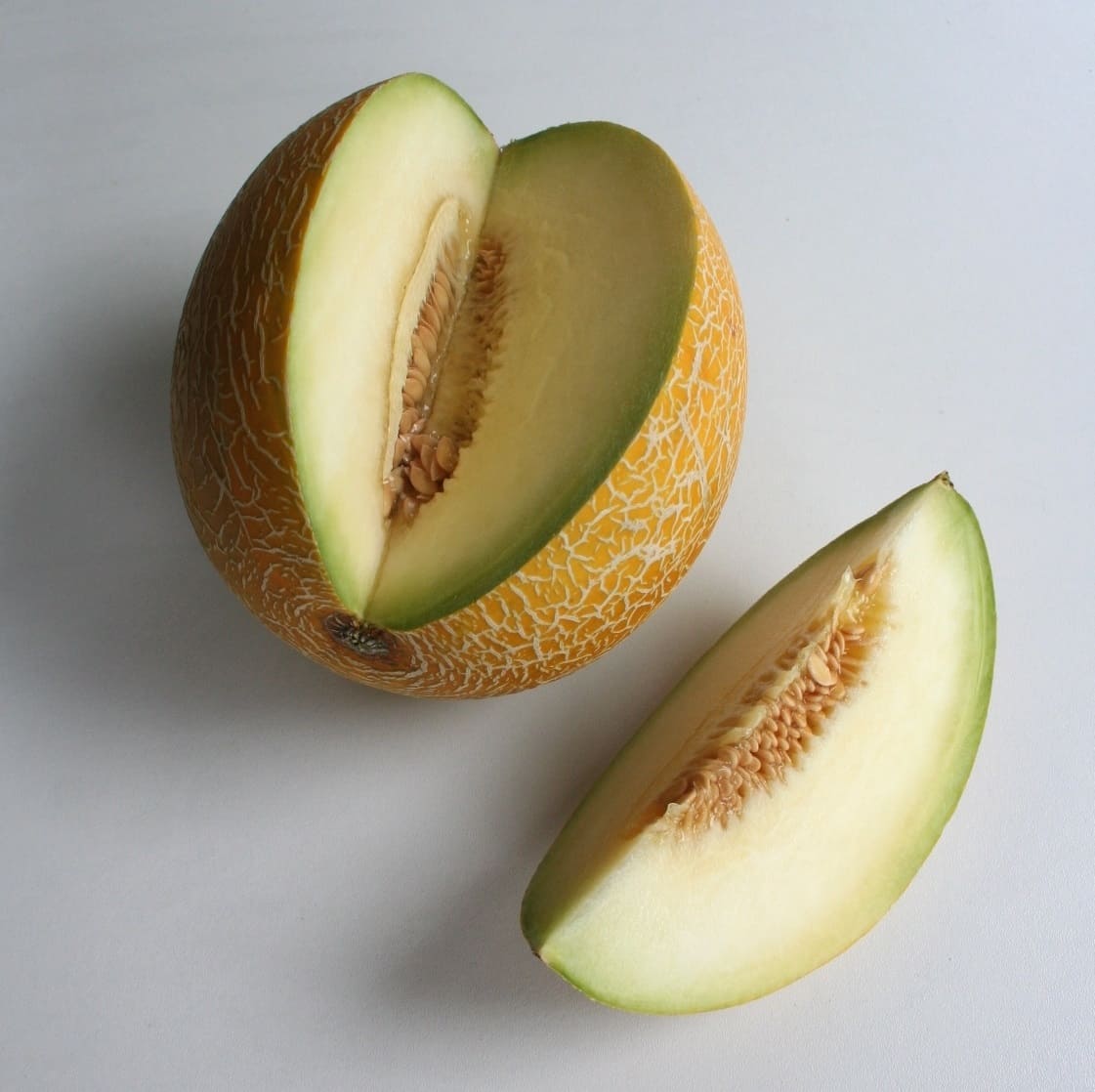
The beauty of Galia lies in its perfect balance. Where cantaloupe can sometimes feel heavy and honeydew occasionally bland, Galia delivers sophisticated sweetness with enough acidity to keep your palate engaged. It’s particularly excellent in fruit salads because the flavor enhances rather than competes with other fruits.
Canary: The Sunshine Experience
True to their name, canary melons radiate golden brightness both visually and flavorfully. These football-shaped beauties develop their signature bright yellow skin as they ripen, protecting pale ivory flesh that offers a unique texture experience—crisp like an Asian pear but sweet like honeydew, with subtle tanginess that adds complexity.
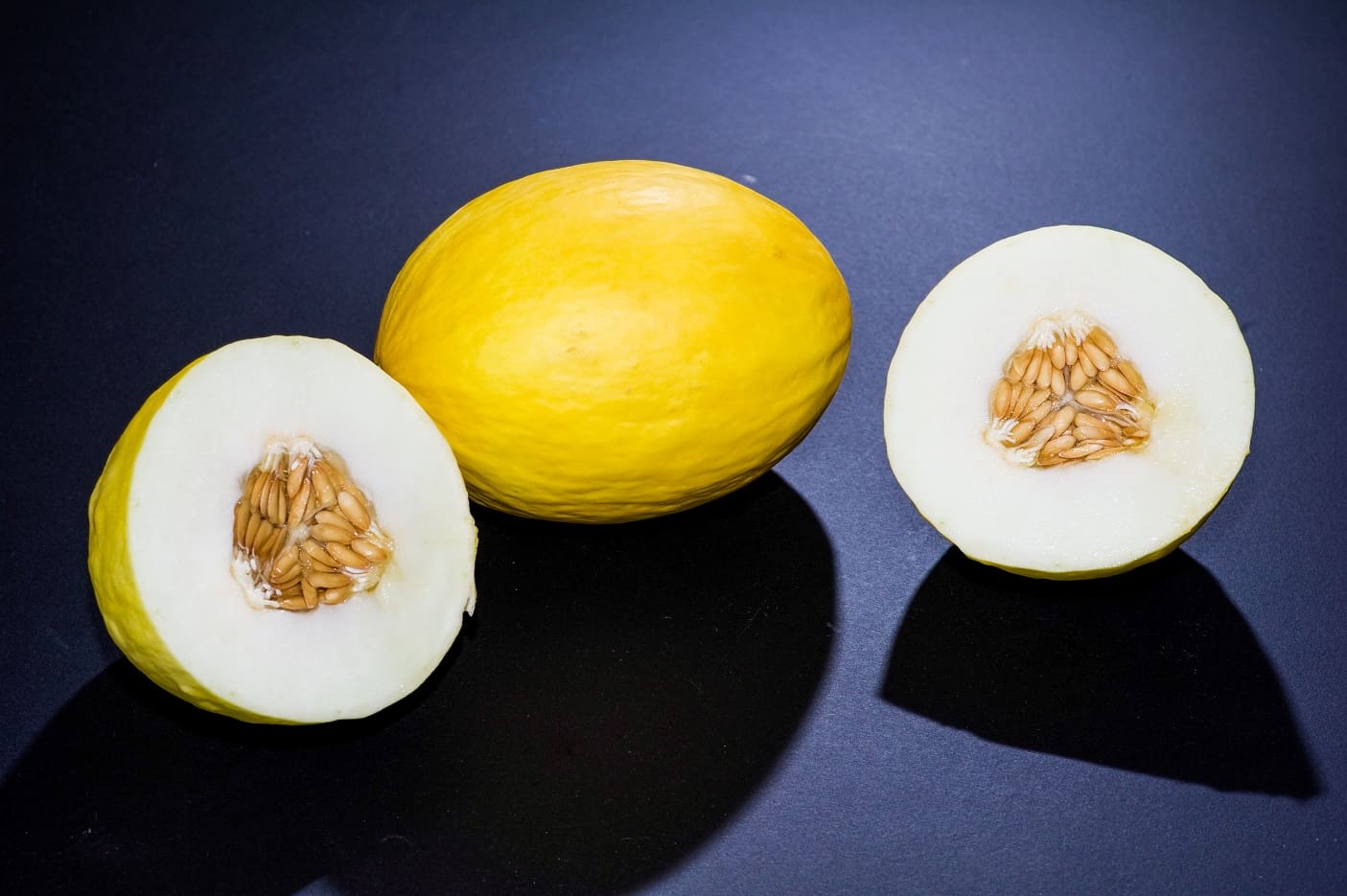
Canary melons excel in applications where you want melon flavor without overwhelming sweetness. They hold their shape beautifully when diced, making them perfect for salsas, and their firm texture means they won’t become mushy in fruit salads that sit for hours at picnics.
Casaba: The Wrinkled Wonder
Named after the Turkish town of Kasaba, these melons look like golden pumpkins with their distinctive wrinkled, corrugated skin that transforms from pale green to bright yellow when ripe. The white to pale green flesh inside offers a refreshing, mildly sweet flavor with subtle spiciness—less intense than cantaloupe but more complex than honeydew.
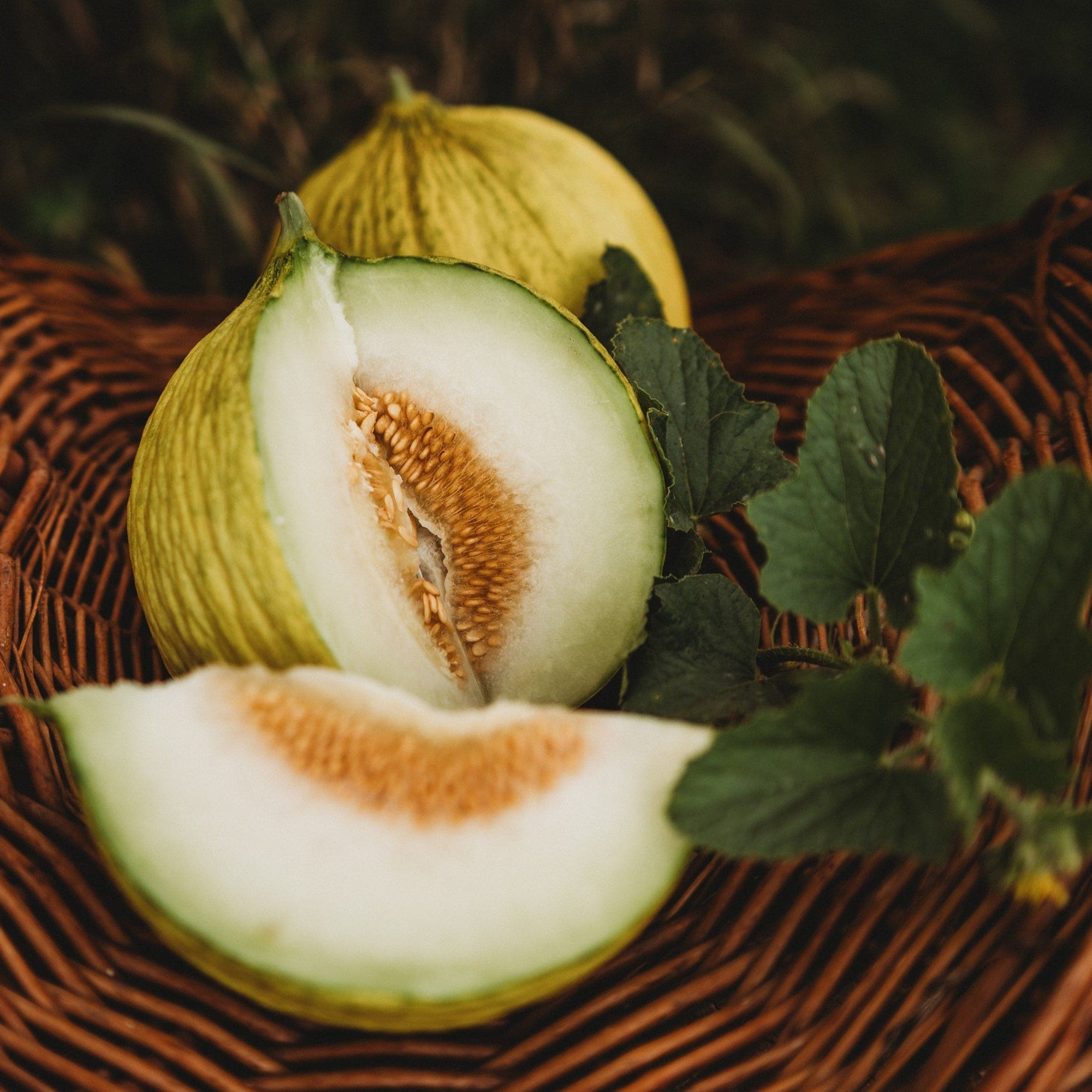
Casaba melons are winter storage champions, capable of keeping for weeks when properly stored. Their mild flavor makes them incredibly versatile, working equally well in sweet fruit salads or savory applications like cold soups and salsas where you want melon character without overwhelming other ingredients.
Persian: The Ancient Aristocrat
These large, elongated melons can weigh up to 10 pounds and represent one of the oldest cultivated varieties, tracing back thousands of years to ancient Persia. Their netted skin conceals firm, orange flesh with an intensely aromatic, almost perfumed quality that surpasses even cantaloupe in complexity.
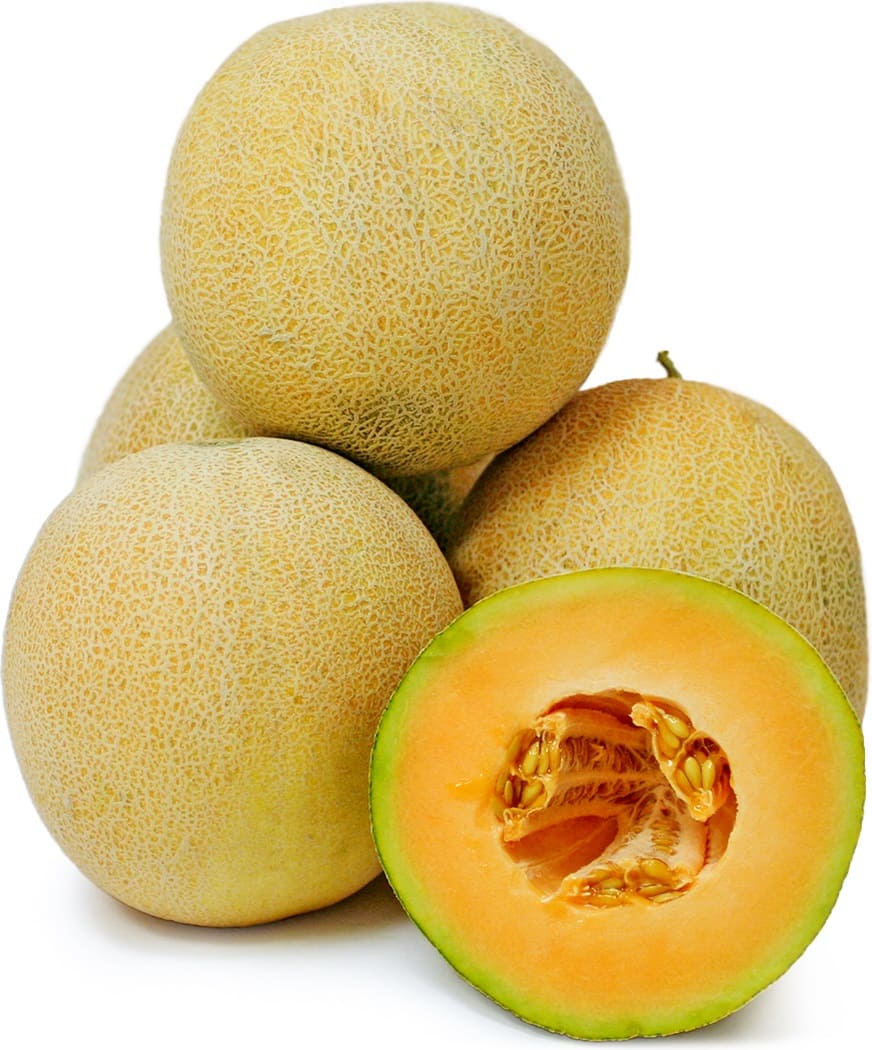
Persian melons ripen late in the season and offer exceptional keeping quality. The flesh maintains its firm texture even when fully ripe, making them excellent for elegant presentations where you need melon that won’t collapse under its own weight. Their sophisticated flavor profile makes them particularly suitable for pairing with wine or cheese.
Ananas: The Pineapple Pretender
The name means “pineapple” in French, and this heirloom variety lives up to its tropical namesake with intensely aromatic flesh that combines traditional melon sweetness with hints of pineapple and vanilla. The exterior features fine netting over pale skin, while the interior reveals creamy white to pale yellow flesh.
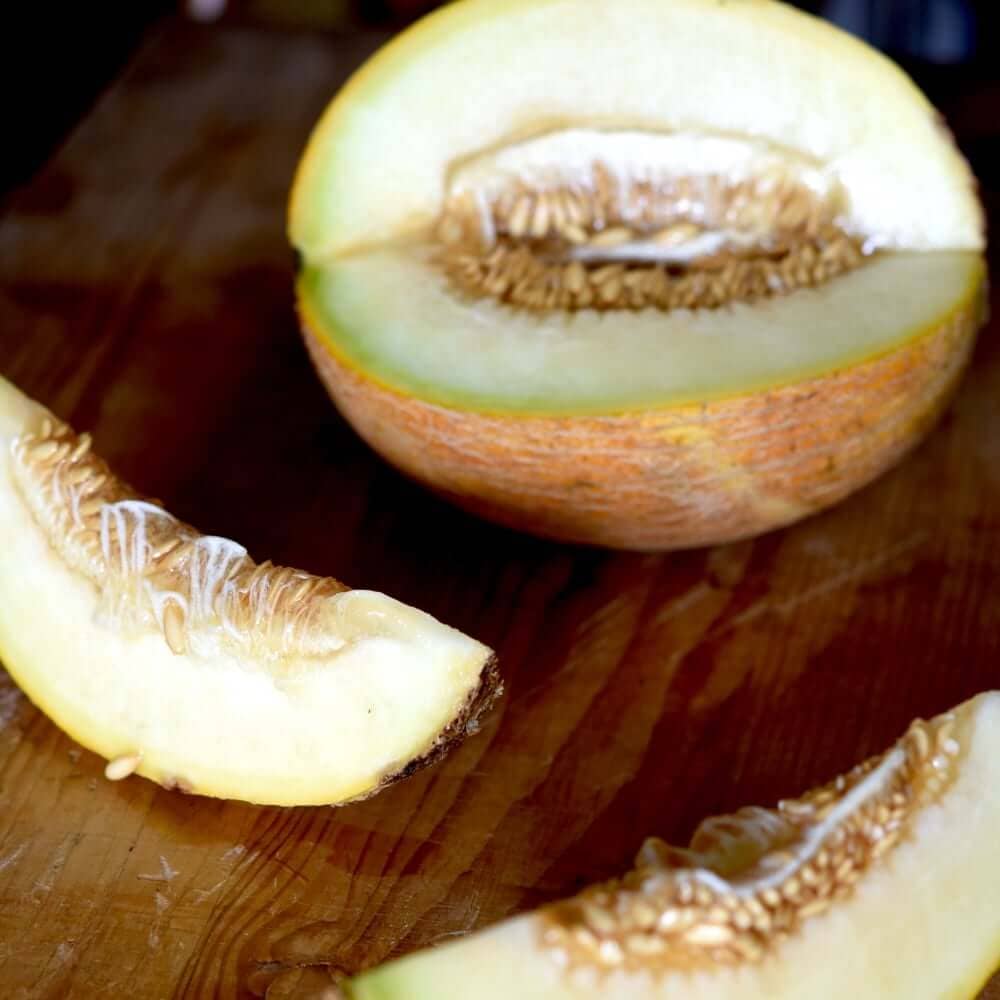
Dating back to the 1800s, Ananas melons represent the pinnacle of aromatic intensity. They’re best enjoyed at room temperature where their perfume can fully develop. The fragrance alone can fill a room, making them as much a sensory experience as a culinary one.
Sprite: The Jewel Box Surprise
These diminutive melons, roughly grapefruit-sized, pack extraordinary sweetness into their compact form. The smooth, cream-colored skin protects white flesh that achieves sugar levels rivaling the sweetest desserts—often reaching 18% sugar content, nearly double that of typical melons.
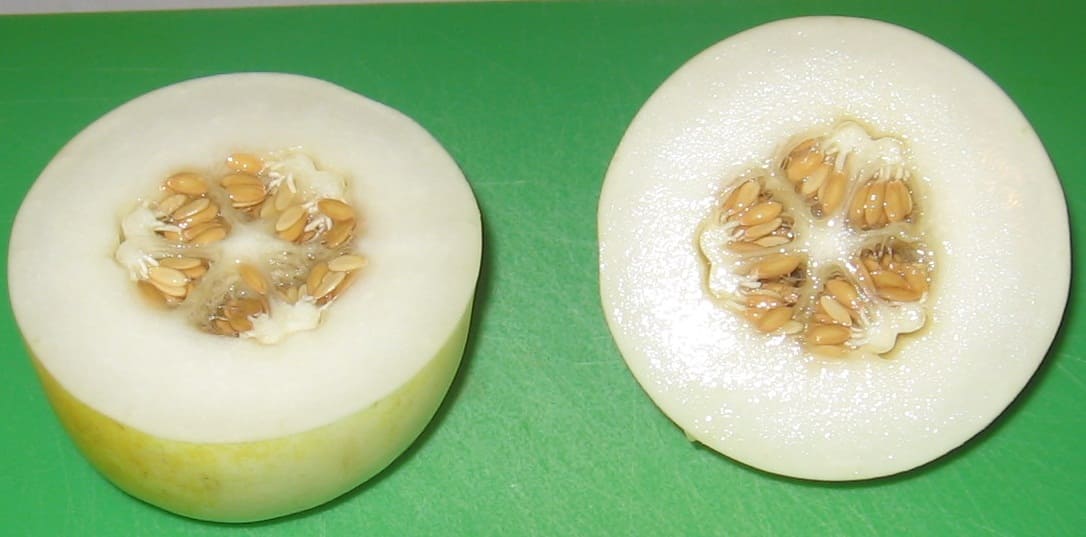
Originally from Japan, Sprite melons are prized for their perfect portion size and incredible sweetness. They’re expensive but worth every penny for special occasions. The flesh has an almost creamy texture that melts on the tongue, creating an experience more like eating premium ice cream than fresh fruit.
Sharlyn: The Aromatic Athlete
These oblong melons feature lightly netted skin and flesh that bridges the gap between cantaloupe and honeydew with a unique sweet-tart balance. The texture is firm enough for active use—perfect for camping or hiking where you need refreshing fruit that won’t turn to mush in a backpack.
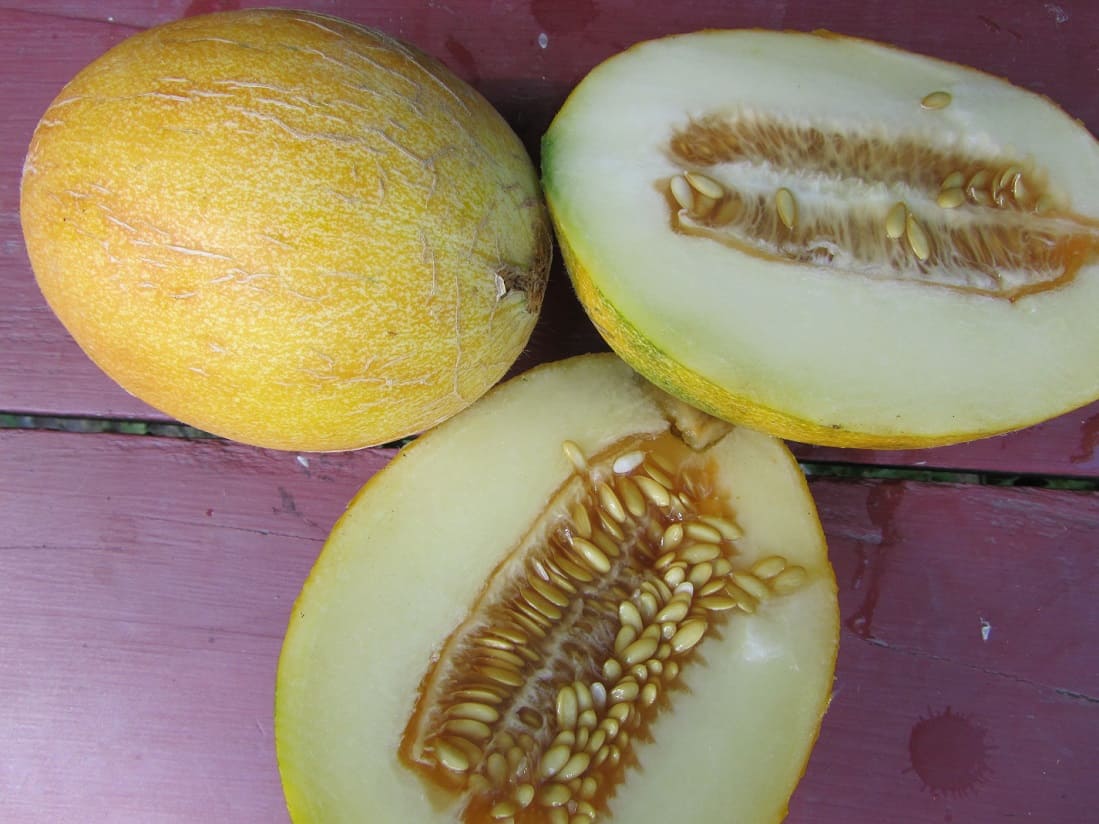
Sharlyn melons develop an incredibly intense fragrance when ripe, often detectable from several feet away. Their balanced acidity makes them excellent for people who find typical melons too sweet, while their firm texture holds up well in composed salads and fruit platters.
Santa Claus: The Storage Miracle
Don’t let the unflattering “Piel de Sapo” (toad skin) nickname discourage you—this Spanish variety represents one of nature’s most impressive preservation achievements. The mottled green and yellow exterior, while admittedly not Instagram-pretty, conceals sweet, pale flesh that tastes like honeydew enhanced with subtle earthy undertones.
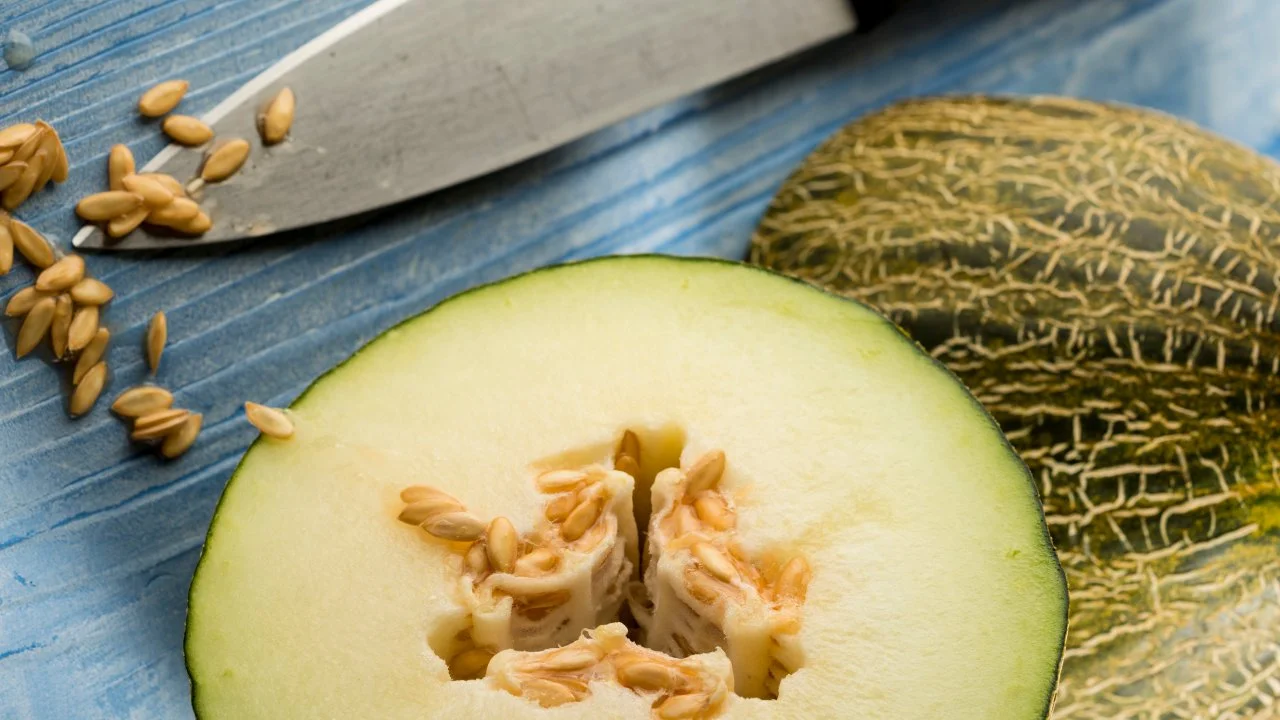
What makes Santa Claus melons remarkable is their incredible storage capability. The thick rind allows them to maintain quality for months when stored properly, which is why they earned their Christmas association—Spanish families could enjoy fresh melon throughout winter from their summer harvest.
👉 Discover 22+ Popular Christmas Tree Varieties: Pros & Cons Explained
Charentais: The French Perfection
Consider Charentais the Rolls-Royce of melons. These small, perfectly round French gems feature smooth, gray-green skin that conceals intensely sweet orange flesh with an almost perfumed aroma. They’re expensive—often $8-12 per melon—but represent the pinnacle of melon breeding focused purely on flavor intensity.
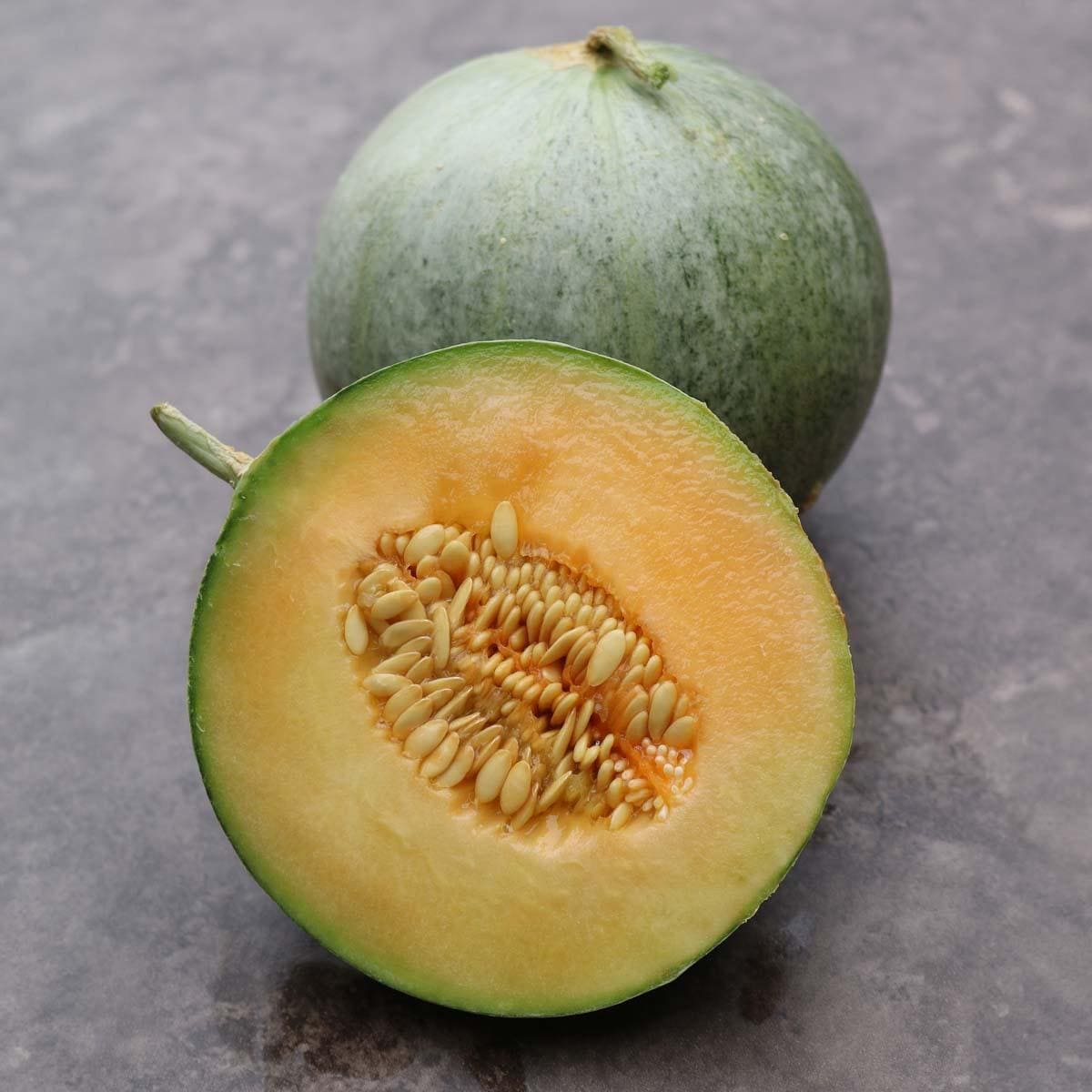
In France, Charentais melons are often served cut in half as individual portions at fine dining establishments, each one perfectly ripe and aromatic. The experience is revelatory for anyone who thought they understood what melons could taste like.
Crenshaw: The Gentle Giant
A hybrid of Persian and Casaba melons, Crenshaw varieties can reach impressive sizes—up to 10 pounds—while maintaining exceptional eating quality. Their golden skin with subtle green undertones protects peachy-orange flesh that achieves an unusual combination of intense sweetness with subtle spiciness.
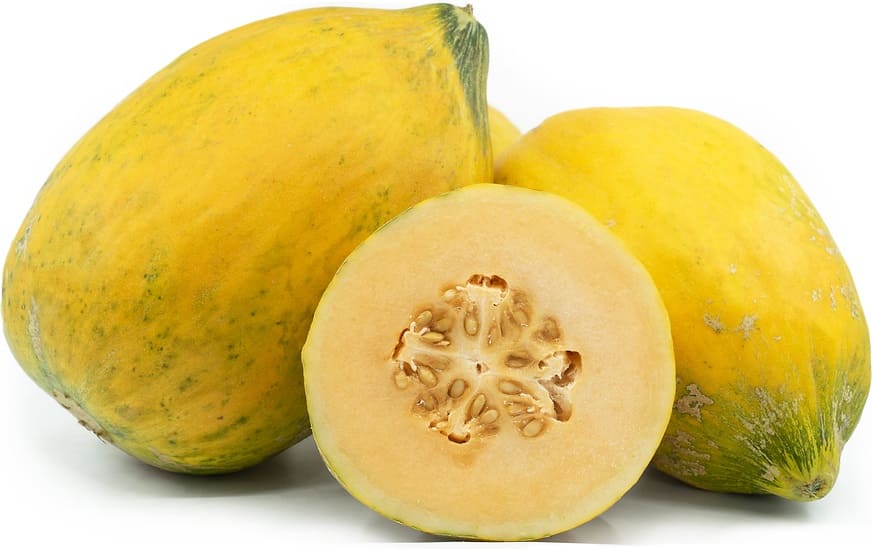
The texture sets Crenshaw apart from other large melons. Rather than becoming grainy or mealy, properly ripened Crenshaw flesh has an almost custard-like smoothness that literally melts on your tongue. This makes them exceptional for both fresh eating and culinary applications like cold soups.
Honey Globe: The Golden Orb
These perfectly spherical melons feature thick, white rinds that protect pale green flesh with extraordinary sweetness—often exceeding 15% sugar content. The round shape isn’t just aesthetically pleasing; it indicates optimal growing conditions where the melon developed evenly in all directions.
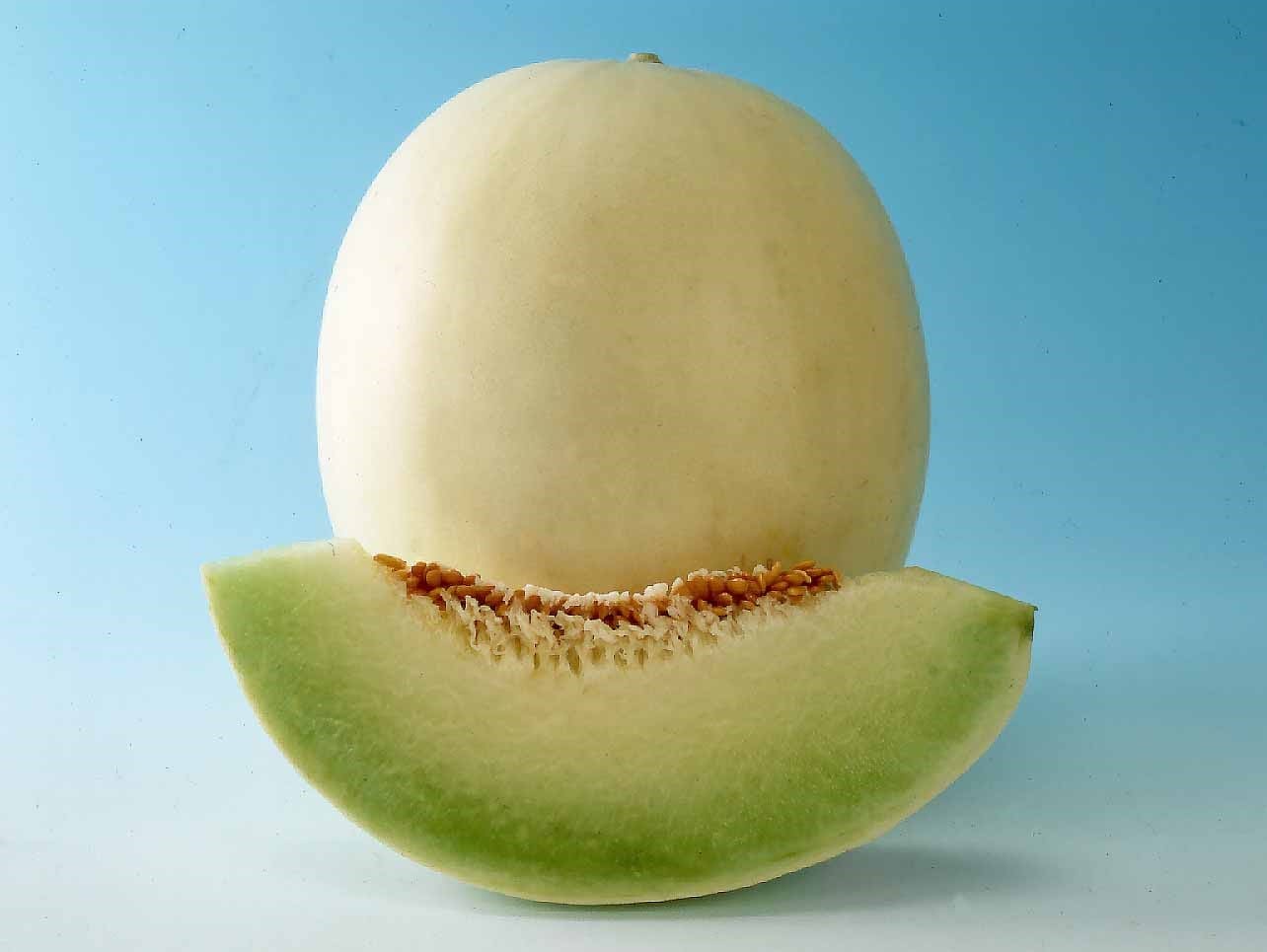
Honey Globe melons have become increasingly rare due to their short harvest window and delicate nature, but they’re worth seeking out for their incredible sweetness and unique texture. The flesh has an almost chewy quality that provides satisfying substance along with intense flavor.
A World Tour of Melon Treasures
Different growing regions produce melons with distinct characteristics, influenced by climate, soil, and centuries of selective breeding. Understanding these regional specialties opens up exciting possibilities for expanding your melon horizons.
Hami Melon: China’s Crispy Contribution
From China’s Xinjiang province comes this elongated marvel with yellow skin streaked with green patterns. What makes Hami melons special is their unexpected texture—rather than the soft, juicy flesh typical of most melons, they offer satisfying crispness reminiscent of the perfect apple, combined with intense sweetness and subtle floral notes.
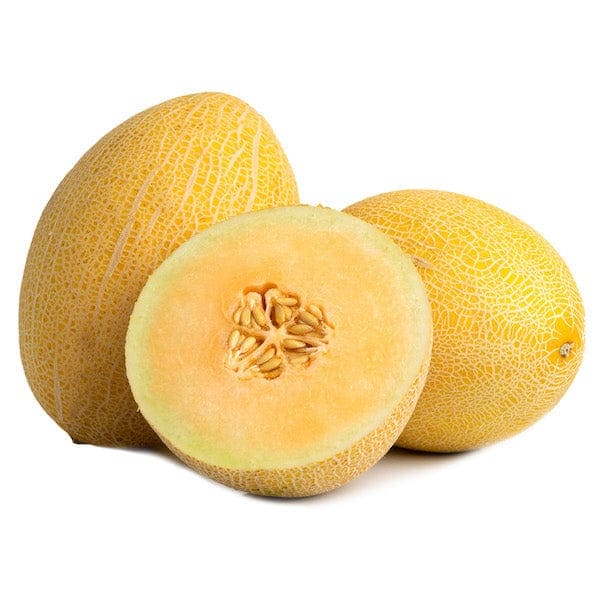
This textural uniqueness makes Hami melons perfect for situations where you want melon flavor without the mess factor. They’re excellent for lunch boxes, hiking snacks, or any time you want refreshing fruit that won’t drip all over your clothes.
Bailan Melon: China’s Honeydew Heritage
Another Chinese treasure, Bailan melons are essentially China’s version of honeydew, featuring smooth pale yellow skin and sweet, juicy white flesh. Originally introduced to China by U.S. Vice President Henry Wallace, these melons have become deeply integrated into Chinese cuisine and are prized for their delicate flavor and high water content.
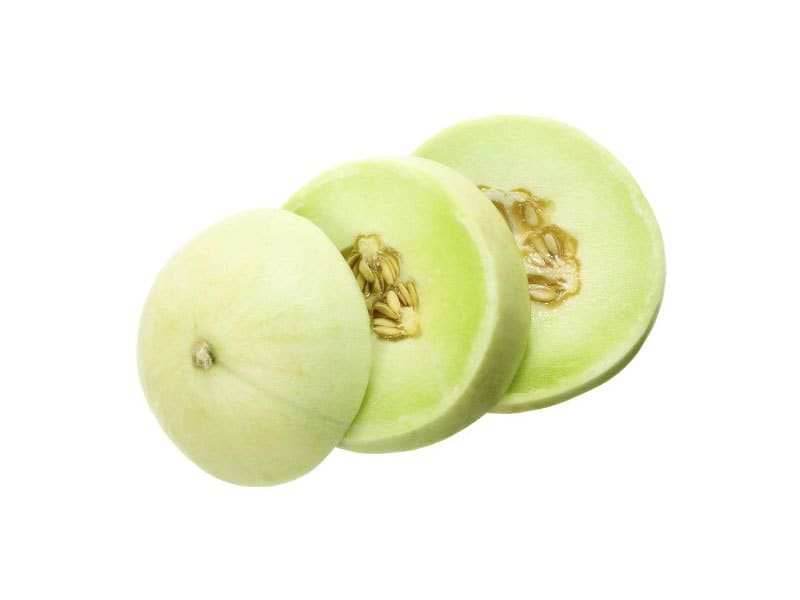
Bailan melons are particularly valued for their protein content, which is higher than most melons, making them a more substantial snack. They’re often served chilled in Chinese restaurants and are excellent when paired with other tropical fruits in mixed fruit presentations.
Korean Melon: The Adorable All-Purpose Fruit
Small, bright yellow with distinctive white stripes, Korean melons (Chamoe) represent efficiency in edible form. About the size of your hand, these charming fruits are completely edible—thin skin, small seeds, and mild, cucumber-like flesh with subtle sweetness.
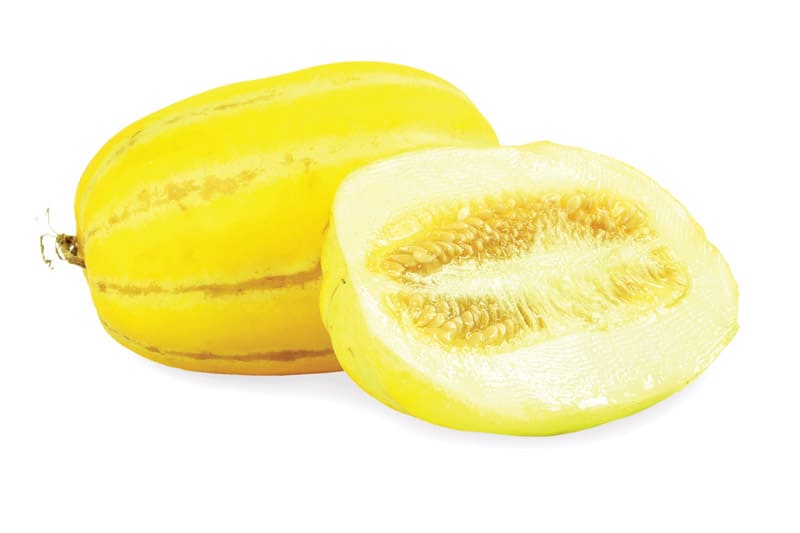
The convenience factor makes Korean melons incredibly appealing for busy lifestyles. No cutting board required, no waste, no mess—just grab and eat like an apple. They’re particularly popular in Asian markets and increasingly available in specialty stores across America.
Valencia Melon: Spain’s Winter Wonder
Named after the famous Spanish region, Valencia melons share characteristics with Santa Claus melons but offer their own distinct personality. These elongated melons feature dark green skin with yellow striping and pale green to white flesh that’s refreshingly sweet with subtle earthiness.
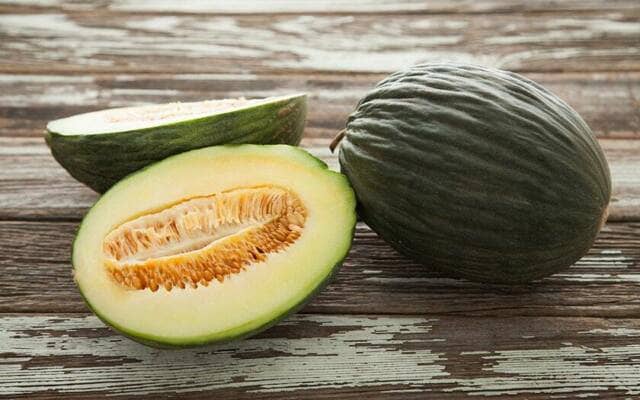
Valencia melons are particularly prized for their exceptional storage capabilities, often improving in flavor over weeks or months when properly stored. They represent the Spanish tradition of preserving summer’s bounty for winter enjoyment, and their clean, mild flavor makes them excellent for both sweet and savory applications.
Tiger Melon: Armenia’s Striped Beauty
These small, round melons earn their name from distinctive yellow and orange stripes that create a tiger-like pattern across their skin. Originally from Armenia, tiger melons have white flesh that’s intensely sweet and aromatic, often with floral notes that rival French Charentais varieties.
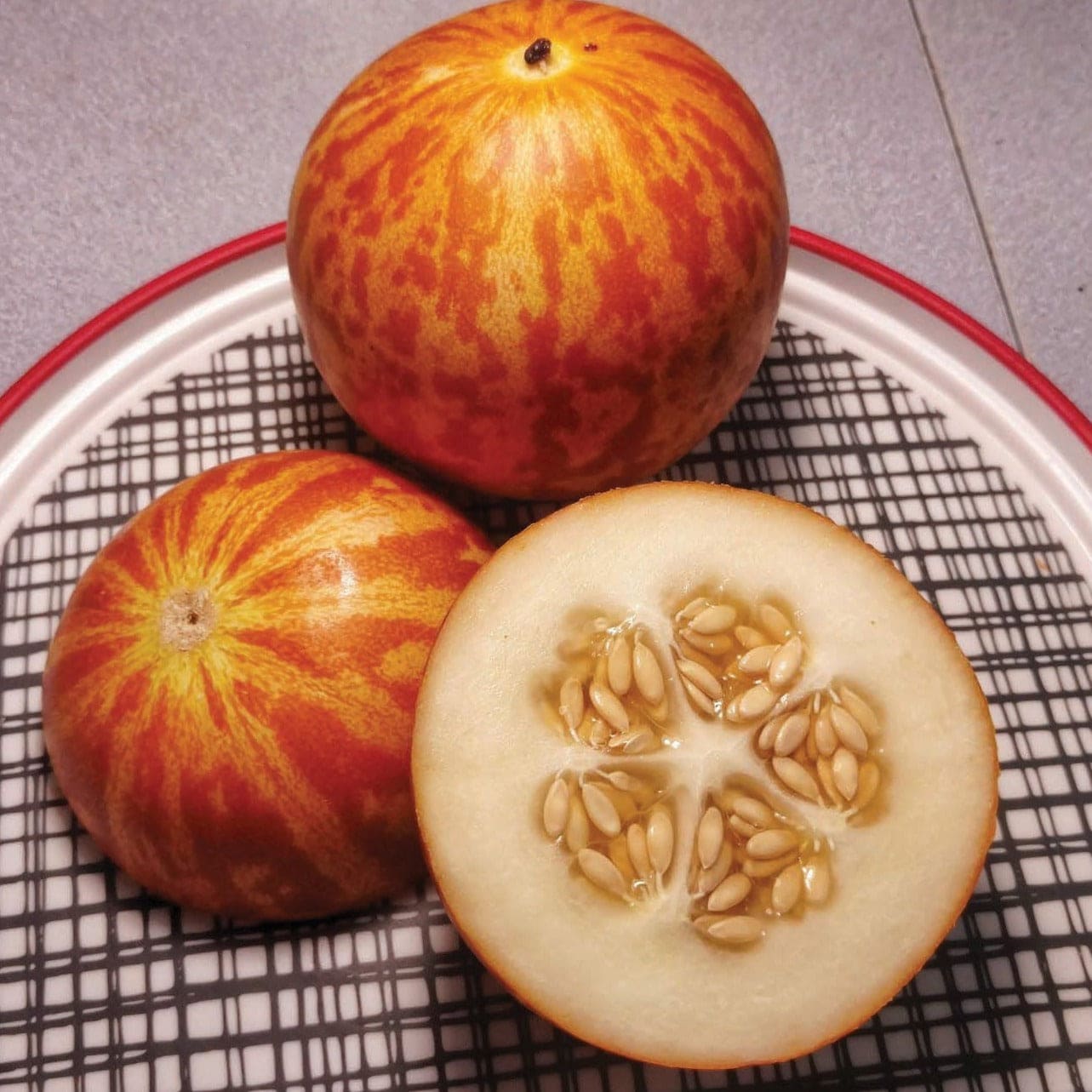
Tiger melons are particularly drought-resistant, making them increasingly popular in Mediterranean climates. Their beautiful appearance makes them excellent for decorative fruit displays, while their concentrated sweetness provides intense flavor in a compact package.
Winter Melon: Asia’s Culinary Chameleon
Also known as ash gourd or wax gourd, winter melons represent a completely different approach to melon consumption. These massive fruits—sometimes weighing 20 pounds or more—have thick, waxy skin and mild, cucumber-like flesh that’s used as a vegetable rather than eaten as fruit.
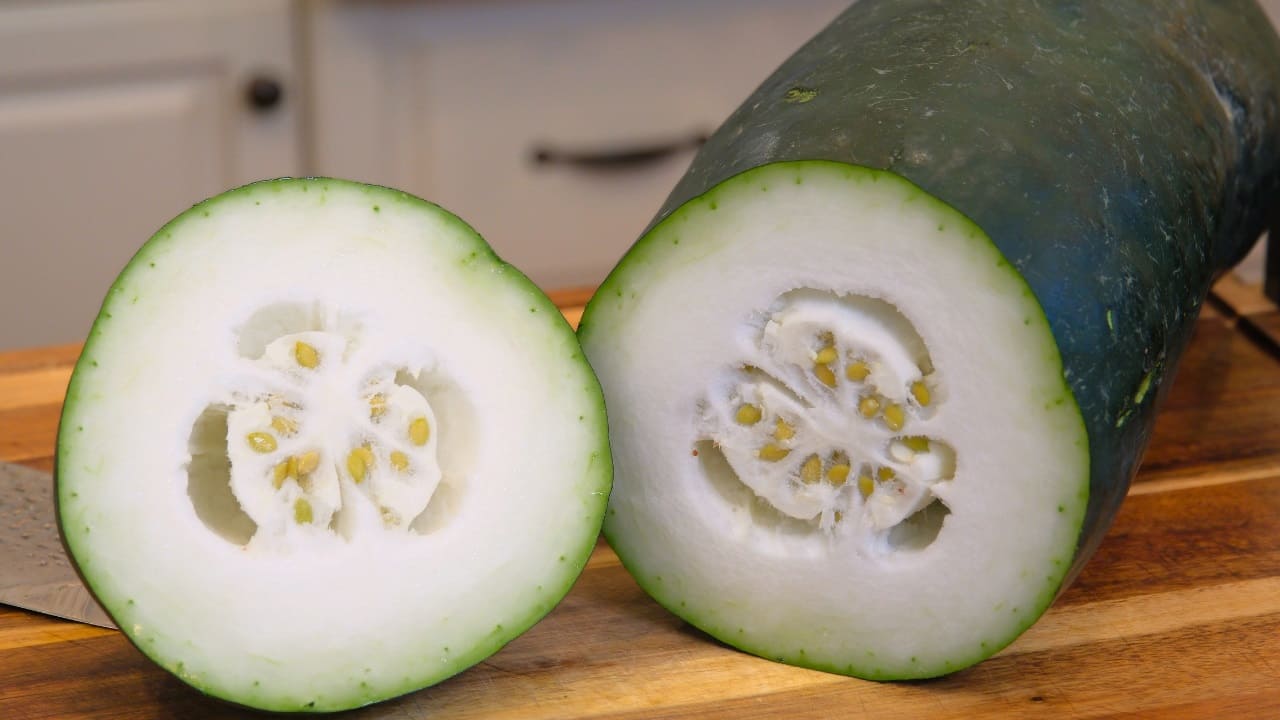
In Chinese and Indian cuisines, winter melon appears in soups, stews, and stir-fries where it absorbs surrounding flavors while providing cooling properties according to traditional medicine. The flesh has a unique ability to maintain texture during cooking, making it valuable for dishes that require long cooking times.
Bitter Melon: The Medicinal Marvel
Technically a melon but used as a vegetable, bitter melon deserves mention for its important role in Asian cuisines and traditional medicine. With its distinctly bumpy exterior and intensely bitter flavor, it’s prized for potential health benefits including blood sugar regulation.
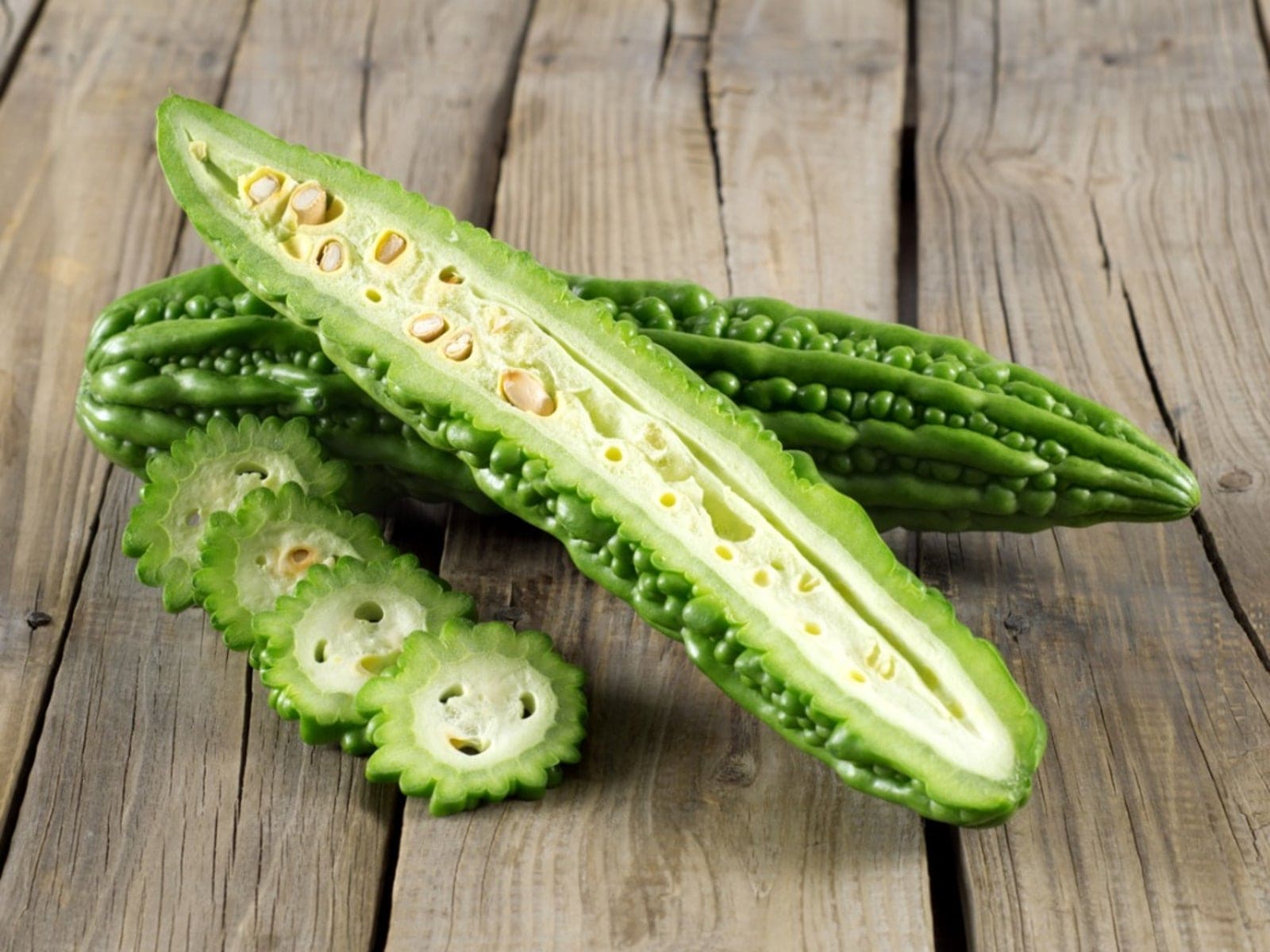
While definitely an acquired taste, bitter melon demonstrates the incredible diversity possible within the melon family. It’s typically cooked in stir-fries, soups, or curries rather than eaten raw, and the bitterness can be moderated through proper preparation techniques.
👉 Here’s How to Get Rid of Bitter Taste in Cucumbers With 4 Simple Techniques
Premium and Luxury Melons: The Crown Jewels
Some melons command extraordinary prices due to meticulous cultivation methods, perfect growing conditions, or extreme rarity. These represent the pinnacle of melon breeding and farming artistry, often treated more like precious gems than everyday fruit.
Yubari King: Japan’s Golden Standard
Arguably the most expensive melon in the world, Yubari King melons can sell for thousands of dollars at auction. Grown exclusively in Yubari, Hokkaido, these perfectly spherical melons undergo incredible care—each plant produces only one fruit, hand-pollinated and individually tended for 100 days.
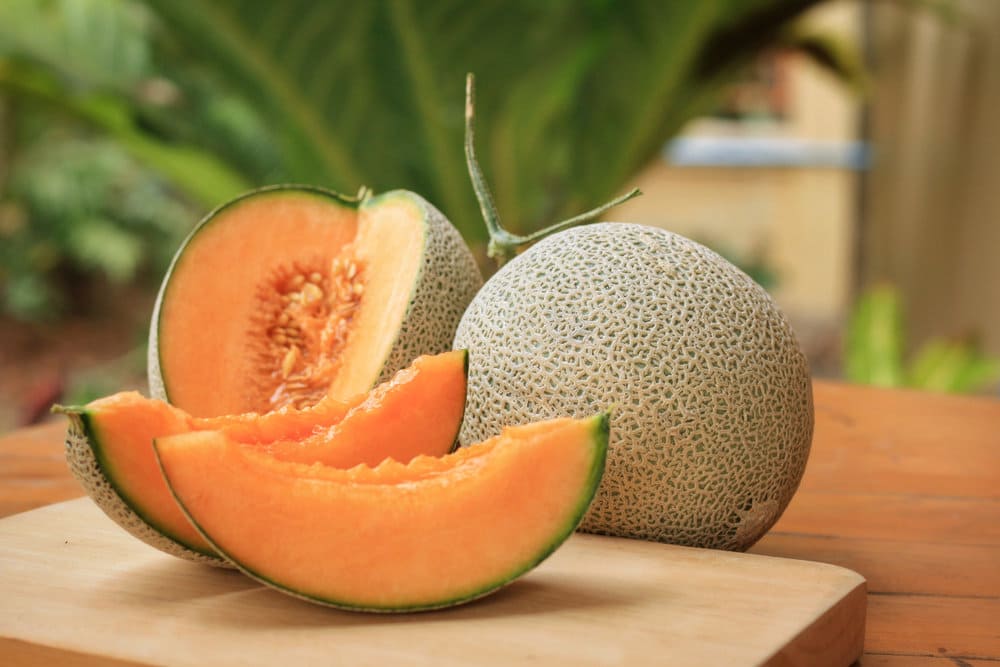
The result is melon perfection: flawless netting, perfect sweetness, and flesh so tender it practically dissolves on the tongue. While most of us will never taste a $30,000 Yubari King, even “lower grade” versions represent an extraordinary melon experience that justifies their premium prices for special occasions.
Crown Melon: The King’s Companion
Another Japanese luxury, Crown melons follow similar cultivation methods to Yubari Kings but feature different characteristics. These melons are grown using the “one tree, one fruit” method, where each vine produces a single perfect melon that receives undivided attention throughout its development.
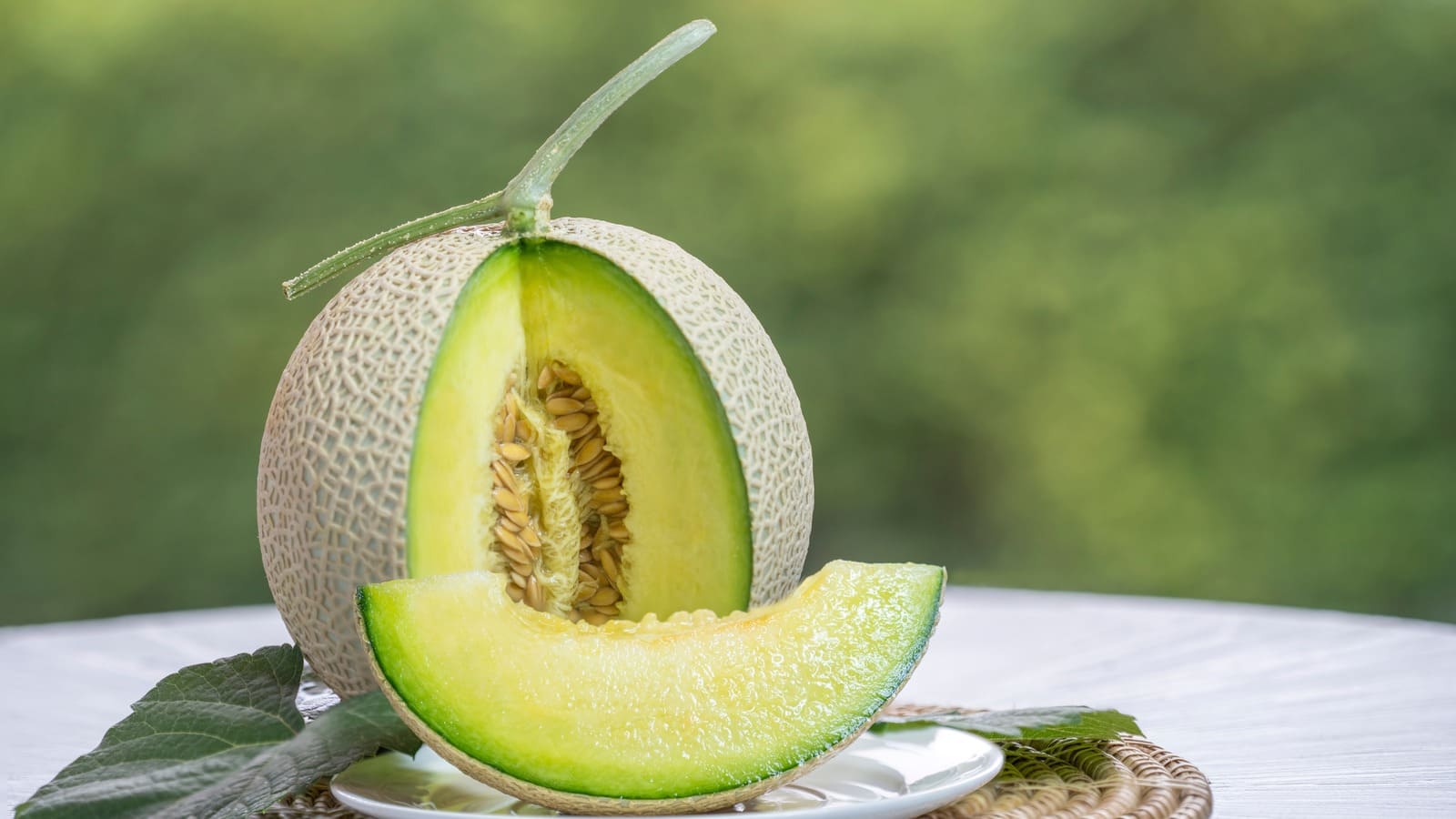
Crown melons are known for their distinctive T-shaped stem and incredible sweetness levels, often reaching 16-18% sugar content. They’re typically sold with certificates of authenticity and come in elegant gift boxes, reflecting their status as premium gifts in Japanese culture.
Densuke Watermelon: The Black Diamond
These rare Japanese watermelons are instantly recognizable by their jet-black skin and perfectly spherical shape. Grown exclusively on Hokkaido island, Densuke watermelons undergo rigorous quality control—only the most perfect specimens make it to market.
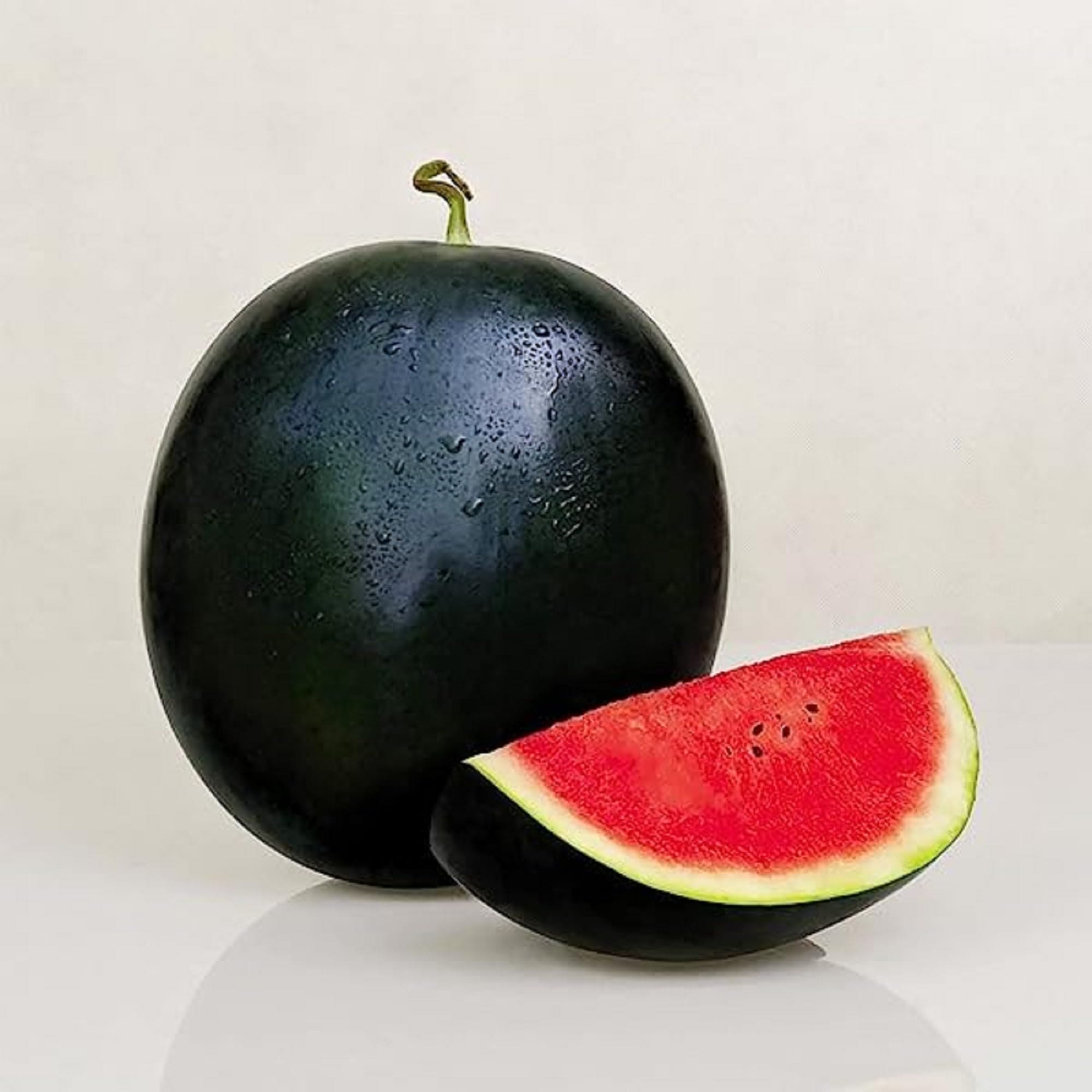
The flesh inside is typically red but with exceptional sweetness and a unique crispy texture that sets it apart from regular watermelons. With limited annual production and extreme attention to quality, individual Densuke watermelons can sell for hundreds or even thousands of dollars.
Unique and Novelty Melons: Nature’s Creative Experiments
These unusual varieties push the boundaries of what we consider “melon,” offering surprising shapes, colors, textures, and flavors that challenge our preconceptions about this fruit family.
Horned Melon (Kiwano): The Alien Fruit
With its bright orange skin covered in horn-like spikes, kiwano melons look like something from another planet. Native to Africa but now grown worldwide, these small melons contain lime-green, jelly-like flesh studded with edible seeds.
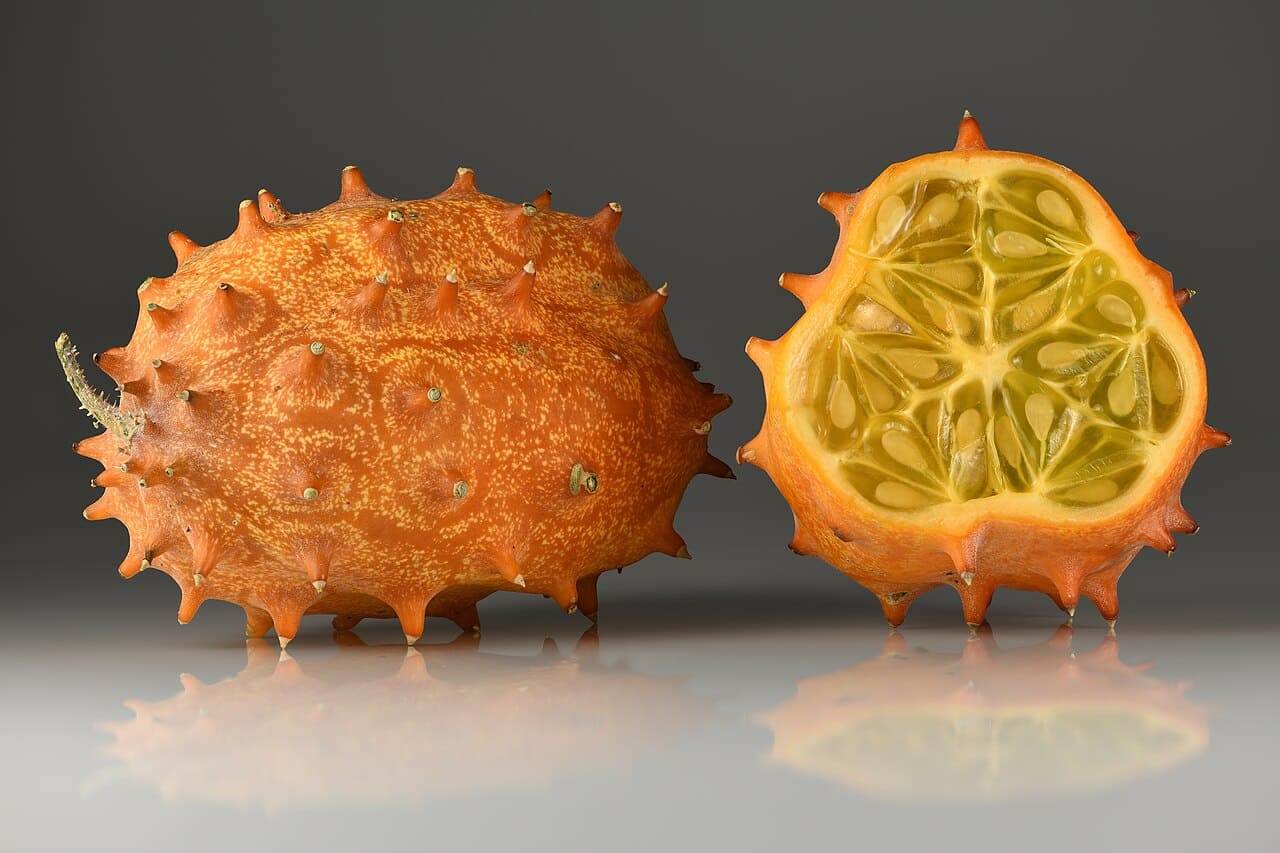
The flavor is surprisingly refreshing—imagine cucumber crossed with banana and kiwi, with a texture similar to passion fruit. While they look intimidating, kiwanos are completely edible and make spectacular garnishes for cocktails or exotic fruit salads.
Armenian Cucumber: The Shape Shifter
Technically a melon despite its name and appearance, Armenian cucumbers can grow over three feet long with pale green, ridged skin. The flesh tastes refreshingly similar to cucumber but slightly sweeter, and unlike true cucumbers, it never becomes bitter even when fully mature.
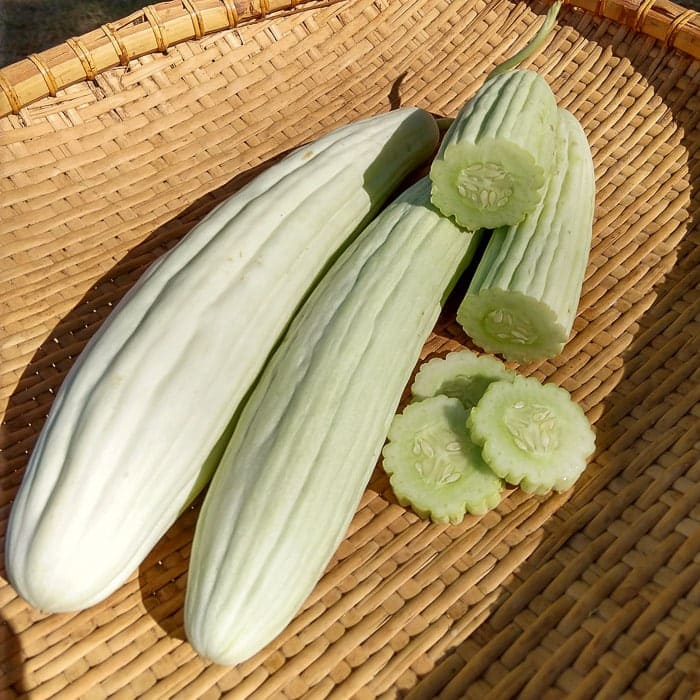
These versatile melons are perfect for people who want melon family benefits without traditional melon sweetness. They’re excellent in salads, sandwiches, or anywhere you’d use regular cucumbers, but with better keeping quality and more consistent flavor.
Banana Melon: The Identity Crisis
These heirloom melons truly resemble large bananas, with smooth yellow skin and elongated shape that can reach 18 inches in length. Despite the appearance, the flesh is orange like cantaloupe, though the flavor is uniquely sweet with subtle spice notes.
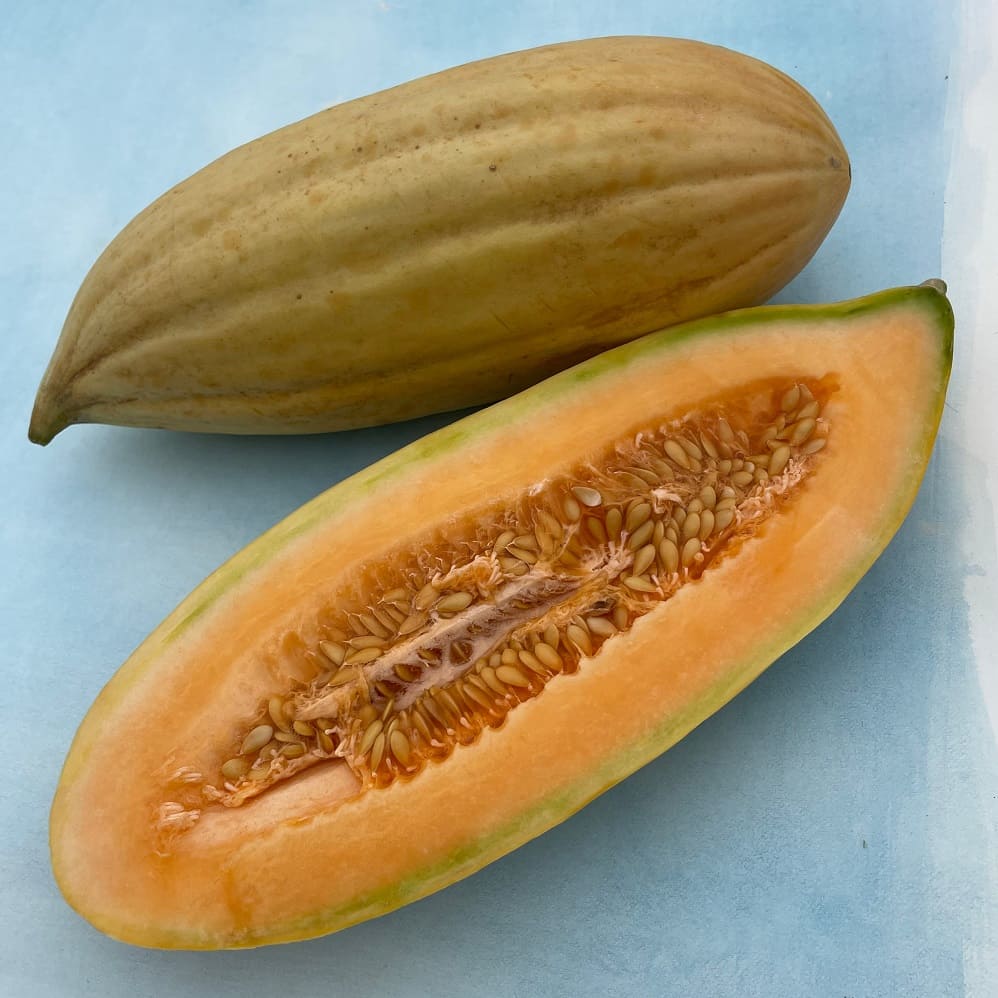
Banana melons represent fascinating genetic diversity within the melon family, showing how selective breeding can create dramatically different forms while maintaining essential melon characteristics. They’re excellent conversation starters and provide good yields from compact garden spaces.
Moon and Stars Watermelon: The Cosmic Beauty
This heirloom watermelon variety features dark green skin decorated with bright yellow spots of varying sizes—the “stars” are small spots while the “moon” is a large circular marking. The dramatic appearance makes these watermelons showstoppers at farmers markets.
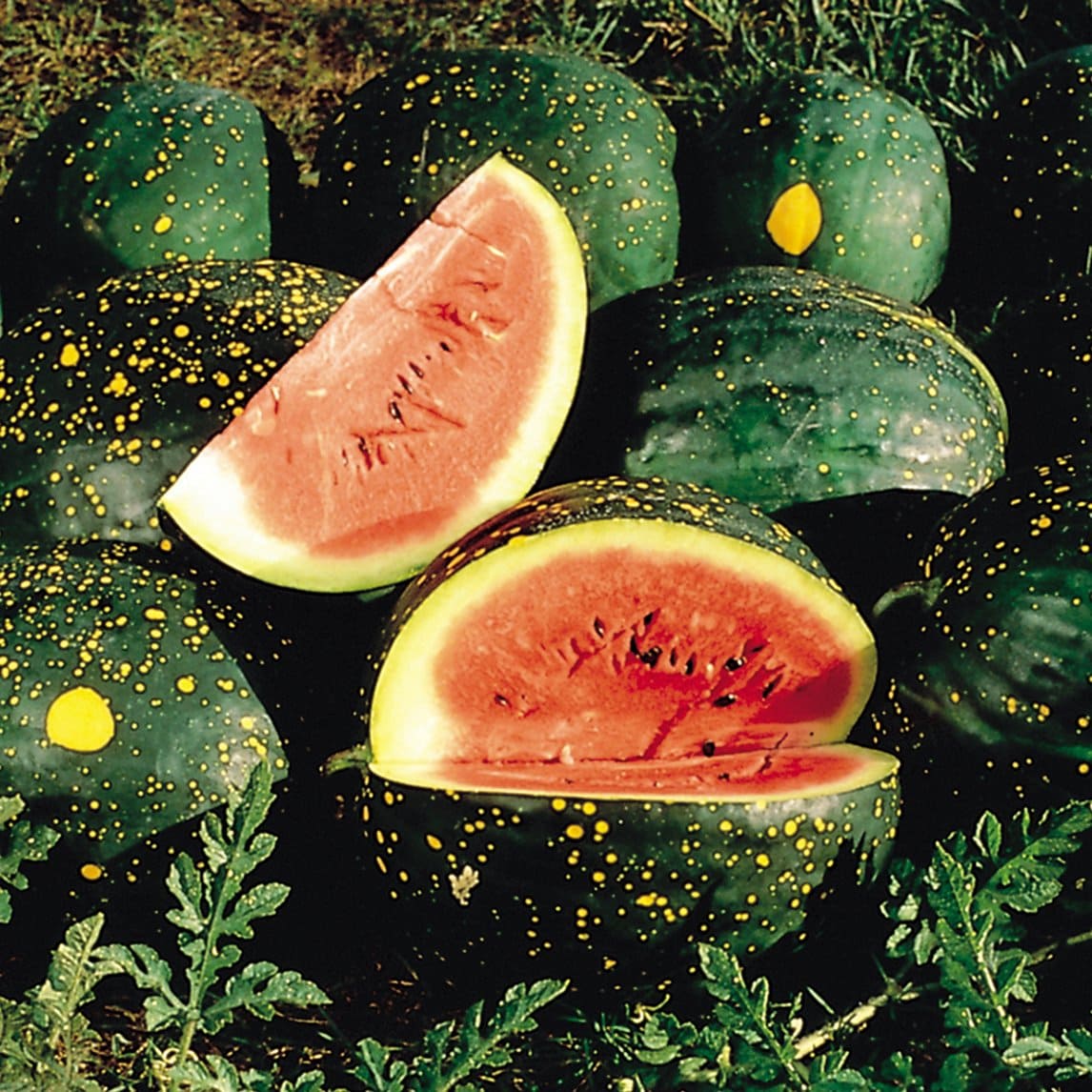
Beyond their stunning looks, Moon and Stars watermelons offer intensely sweet red flesh that often surpasses hybrid varieties in flavor intensity. They represent the kind of genetic diversity being preserved by heirloom seed savers worldwide.
Cucamelon (Mouse Melon): The Miniature Marvel
These grape-sized fruits look exactly like tiny watermelons but taste like cucumbers with a tangy twist. Native to Mexico and Central America, cucamelons grow prolifically on vines and can be eaten whole—skin, seeds, and all.

While not sweet like traditional melons, cucamelons offer incredible convenience and unique flavor. They’re perfect for cocktail garnishes, pickles, or anywhere you want melon family genetics with cucumber-like refreshment in a perfectly portable package.
Gac Melon: The Superfood Surprise
These spiky orange fruits from Southeast Asia might not look appealing, but they contain some of the highest levels of antioxidants found in any fruit. The brilliant red interior contains levels of lycopene and beta-carotene that far exceed most other fruits.
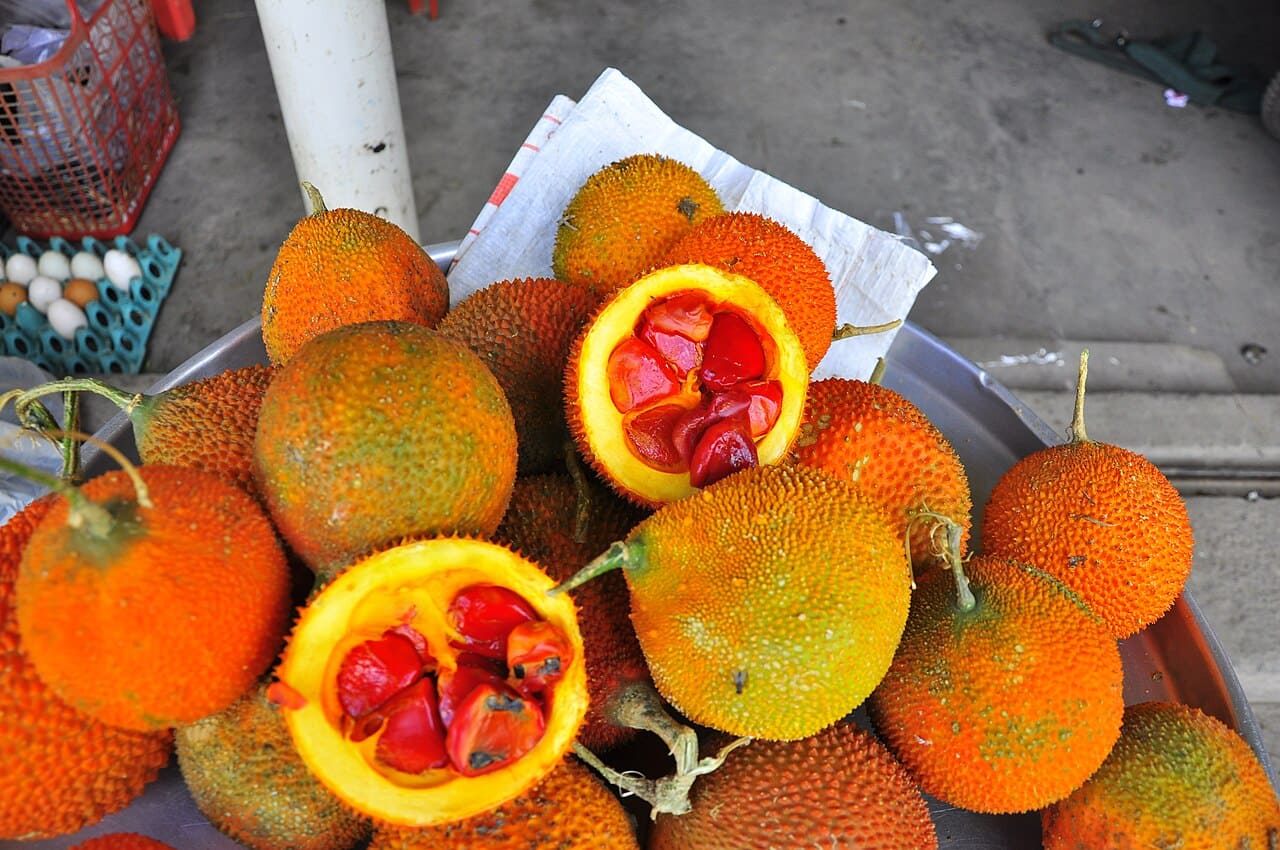
While not traditionally eaten raw due to mild flavor, gac melons are increasingly valued for their nutritional density. In Vietnam, they’re traditionally used to color and flavor festive rice dishes, while modern applications include superfood smoothies and health supplements.
Sugar Kiss and Autumn Sweet: The Concentrated Sweetness
These smaller specialty melons focus on delivering maximum sweetness in compact packages. Sugar Kiss melons literally melt in your mouth like cotton candy, while Autumn Sweet varieties concentrate their sugars to create intensely satisfying flavor experiences.

Both varieties represent modern breeding focused on sugar content and texture rather than size or shipping durability. They’re perfect for people who want the ultimate melon experience in manageable portions.
Seasonal Strategy: When to Find Your Favorites
Understanding melon seasons transforms casual shopping into strategic acquisition of peak-quality fruit. Different varieties ripen at different times, and knowing these patterns helps you plan your melon adventures for maximum flavor impact.
- Early Summer (May-June) brings the first muskmelons—Galia, early cantaloupe varieties, and greenhouse-grown specialty types like Charentais. These early varieties often command premium prices but offer the first taste of melon season after months of waiting.
- Peak Summer (July-August) represents melon paradise. This is when watermelons reach perfection, standard cantaloupe varieties hit their stride, and honeydew melons achieve optimal sugar development. Farmers markets overflow with options, and prices typically reach their annual lows.
- Late Summer (August-September) introduces the winter storage varieties—Santa Claus melons, Casaba types, and late-season specialties that trade immediate perfection for extended keeping ability. These varieties often improve in storage, developing more complex flavors over weeks or months.
- Year-Round Availability characterizes some varieties like standard watermelon, cantaloupe, and honeydew, thanks to global growing regions and careful variety selection. However, seasonal peak periods still offer dramatically better flavor and value.
The Professional’s Guide to Perfect Selection
After years of watching produce professionals select melons, certain techniques consistently identify the best fruit. These methods work across varieties, though each melon type has specific indicators worth understanding.
- Weight tells the water story.
A good melon feels surprisingly heavy for its size, indicating high juice content rather than dried-out flesh. This universal principle applies whether you’re selecting a tiny Korean melon or a massive watermelon.
- Skin condition reveals handling history.
Avoid melons with soft spots, cracks, or bruises, which indicate rough handling or over-ripeness. However, minor surface scratches typically don’t affect internal quality, and “sugar cracks” near the stem end actually indicate exceptional sweetness.
- The stem end speaks volumes.
For melons that slip when ripe (cantaloupe, Galia), look for a smooth, slightly indented stem scar. A rough or torn stem area suggests premature harvesting. For melons that don’t slip (honeydew, watermelon), the stem should be dried and brown, not green.
- Color changes signal ripeness.
Each variety has specific color cues—watermelons develop creamy yellow field spots, cantaloupes shift from green to golden under their netting, and honeydews transition from pale green to creamy yellow overall.
- Pressure points vary by type.
The blossom end (opposite the stem) should yield slightly to gentle pressure in smooth-skinned varieties like honeydew and canary. Watermelons should feel firm overall, while cantaloupe readiness is better judged by aroma than pressure.
Maximizing Flavor Through Proper Handling
The journey from selection to consumption significantly impacts your melon experience. Understanding how to store, ripen, and prepare different varieties ensures you get maximum flavor from every purchase.
- Room temperature ripening works for most melons that need additional development. Place them in a spot with good air circulation, away from direct sunlight, and check daily for progress. Some varieties, particularly those that slip when ripe, can improve significantly over 2-3 days at room temperature.
- Refrigeration timing matters more than most people realize. While whole melons can sit at room temperature safely for several days, refrigeration stops the ripening process. Only refrigerate when melons have reached your preferred ripeness level, not as soon as you bring them home.
- Washing before cutting prevents bacterial transfer from the rind to the flesh. Even if you’re not eating the rind, bacteria on the exterior can contaminate your knife and cutting board, then transfer to the edible portions. A thorough scrub under running water suffices for most varieties.
- Strategic cutting preserves quality and prevents waste. Remove all seeds except in watermelon, where they’re edible and nutritious. Cut melons into serving-sized portions to minimize handling, and store cut pieces in airtight containers to prevent moisture loss and off-flavors from refrigerator absorption.
- Creative preservation extends melon season beyond peak ripeness. Freeze cubes or balls for use in smoothies or as natural ice cubes for summer drinks. Watermelon rinds make excellent pickles, while overripe melons can be pureed and frozen for later use in sorbets or cocktails.
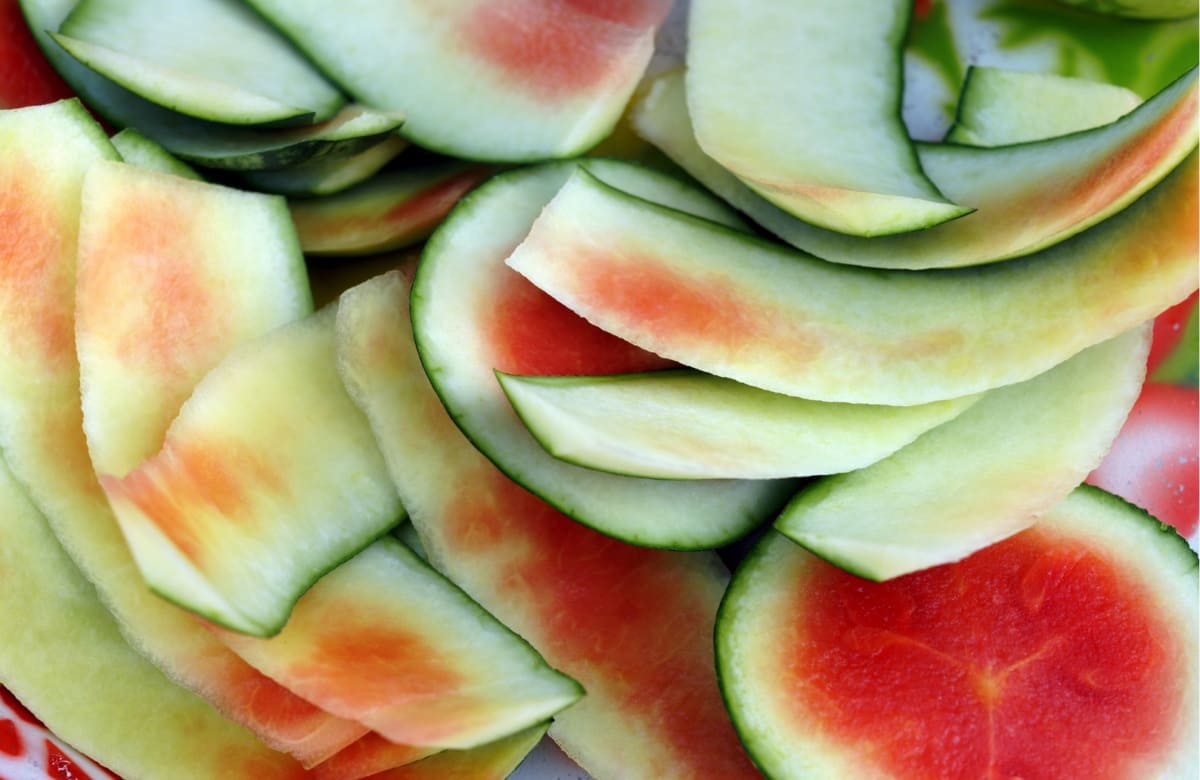
Nutritional Intelligence: What Different Melons Offer
While all melons provide hydration and natural sweetness, different varieties offer distinct nutritional profiles that can influence your selection based on health goals or dietary needs.
- Cantaloupe leads in vitamin A, providing nearly 100% of daily needs in a single cup, thanks to high beta-carotene levels that create its orange color. This makes it particularly valuable for eye health and immune function, while also providing substantial vitamin C and potassium.
- Watermelon contains unique lycopene, the same antioxidant that makes tomatoes red and potentially supports cardiovascular health. It also provides more vitamin A than many people realize, particularly in varieties with deeper red flesh.
- Honeydew excels in vitamin C and potassium, often providing higher levels than other melons despite its pale appearance. The potassium content makes it particularly valuable for athletes or anyone focused on heart health and blood pressure management.
- Specialty varieties often concentrate specific nutrients—Hami melons tend to be particularly high in vitamin C, while darker-fleshed varieties like Charentais provide more antioxidants than their pale counterparts.
- Calorie consideration remains remarkably consistent across varieties, with most melons providing 35-60 calories per cup while delivering substantial vitamins, minerals, and fiber. This makes them excellent choices for weight management or anyone seeking satisfying sweetness without caloric density.
Common Mistakes That Ruin the Melon Experience
Understanding what can go wrong helps you avoid the disappointments that turn people away from exploring melon varieties. These mistakes are surprisingly common but entirely preventable with proper knowledge.
- Buying before peak season often leads to expensive disappointment. Early-season melons may look perfect but lack the sugar development that comes from optimal growing conditions. Wait for local season peaks when possible, or understand that off-season purchases may require different expectations.
- Refrigerating too early stops the ripening process and can prevent melons from reaching their flavor potential. Many melons benefit from a few days at room temperature even after purchase, particularly if they were harvested slightly early for shipping purposes.
- Expecting uniform ripening across a whole melon leads to frustration. Most melons ripen from the inside out, and the area nearest the seeds typically reaches peak sweetness first. This is normal and doesn’t indicate a problem with the fruit.
- Ignoring variety characteristics results in inappropriate storage or preparation. Winter storage varieties like Santa Claus melons may taste bland when first purchased but develop complex flavors over weeks in proper storage. Understanding these differences prevents premature disappointment.
- Comparing all melons to watermelon creates unrealistic expectations. Each variety offers unique characteristics, and approaching unfamiliar melons with watermelon expectations often leads to disappointment. Embrace the differences rather than seeking similarity.
Advanced Applications: Cooking and Pairing Like a Pro
While melons shine when eaten fresh, understanding their culinary potential opens up exciting possibilities for both everyday meals and special occasions. Different varieties respond differently to various cooking methods and flavor combinations.
- Grilling intensifies sweetness while adding subtle smokiness that transforms melon into a sophisticated side dish or dessert component. Firmer varieties like canary or Hami work best, as they hold their shape while developing caramelized surfaces. A light brush of olive oil prevents sticking while allowing natural sugars to concentrate.
- Cold soup applications showcase melon’s versatility in savory contexts. Cantaloupe or honeydew can form the base for elegant gazpachos, while more exotic varieties like Santa Claus create unique flavor profiles when combined with herbs, citrus, and subtle spices.
- Pairing principles extend far beyond the classic prosciutto combination, though that remains excellent for good reason. The salt-sweet contrast works with many cured meats, but consider broader applications—melon with fresh mozzarella and basil, with feta and mint, or with goat cheese and black pepper.
- Beverage innovation transforms melons into refreshing drinks that go well beyond basic smoothies. Watermelon makes exceptional agua fresca, cantaloupe creates sophisticated cocktail mixers, and honeydew can be the base for elegant non-alcoholic spritzers.
- Preservation techniques allow you to enjoy peak-season flavors throughout the year. Proper freezing maintains much of the nutritional value while creating convenient ingredients for future smoothies or cocktails. Dehydrating creates concentrated flavor bombs perfect for trail mixes or garnishes.

👉 Here’s How to Dehydrate Apples at Home: Easy Steps for Perfect Results
Your Melon Journey Begins
The world of melons extends far beyond the familiar trio most people know, offering a spectrum of flavors, textures, and experiences that can transform your relationship with fresh fruit.
Start with confident selection of familiar varieties using the professional techniques outlined here, then gradually explore specialty types as you encounter them at farmers markets or specialty stores.
Remember that melon exploration is inherently seasonal and regional. What’s available in your area will vary throughout the year, and part of the joy lies in discovering what grows well in your local climate during peak season.
The best melon you’ve ever tasted might be growing just a few hours from your home, waiting for you to discover it at the right farmers market on the perfect summer morning.
Don’t feel pressure to try everything at once. Pick one new variety this season, master its selection and preparation, then expand your repertoire gradually. Each new melon you understand adds to your appreciation of the others, creating a foundation of knowledge that enhances every future encounter with these remarkable fruits.
The next time you find yourself at that farmers market, looking at melons with mysterious names and unfamiliar appearances, you’ll have the confidence to make selections that lead to delicious discoveries rather than expensive disappointments. Your perfect melon adventure is waiting—all you have to do is take that first bite.
